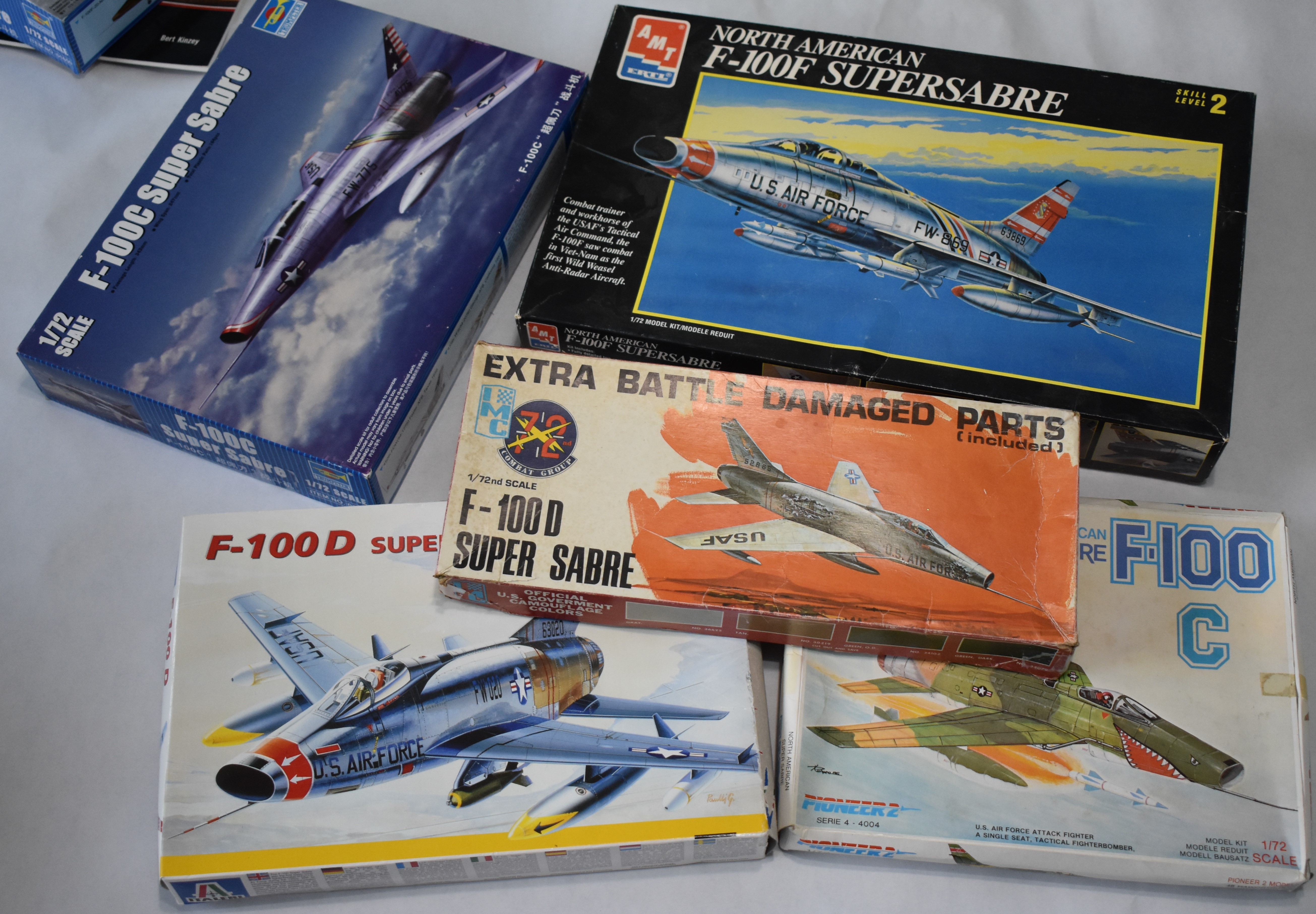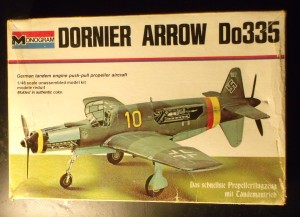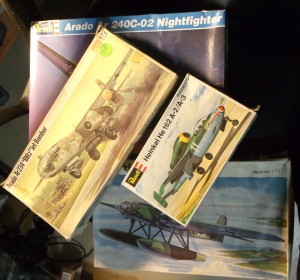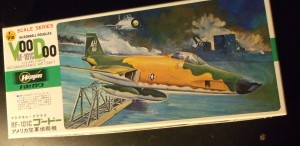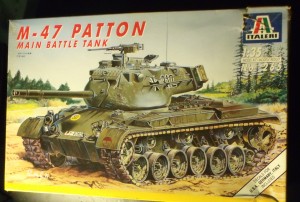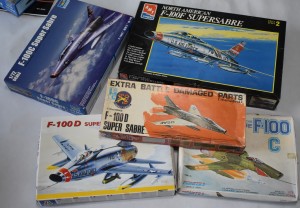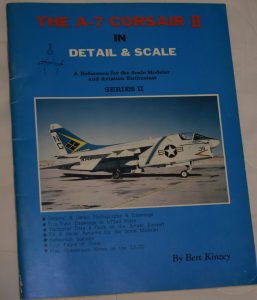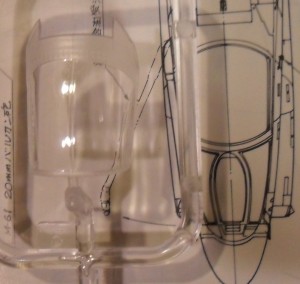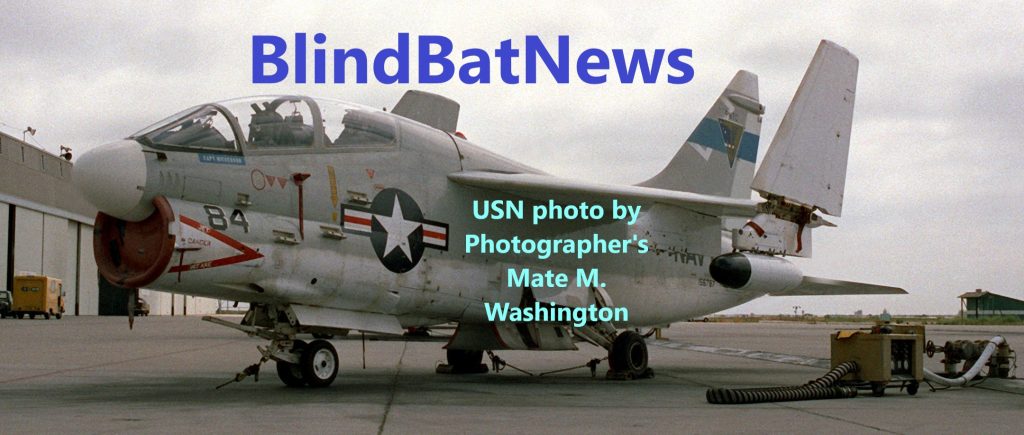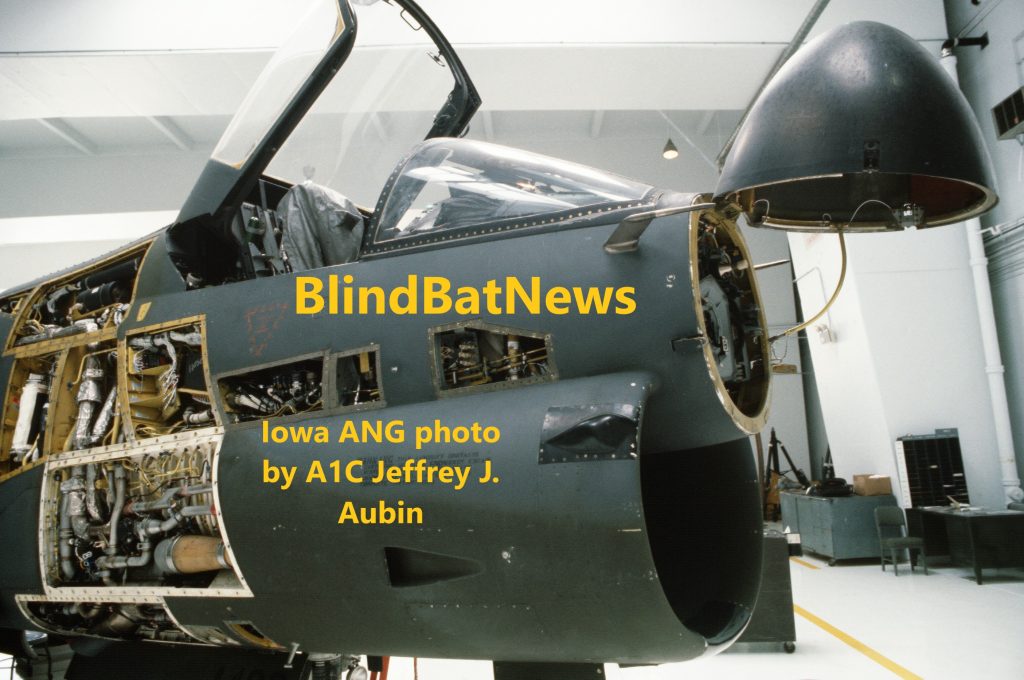50 years of Air Superiority
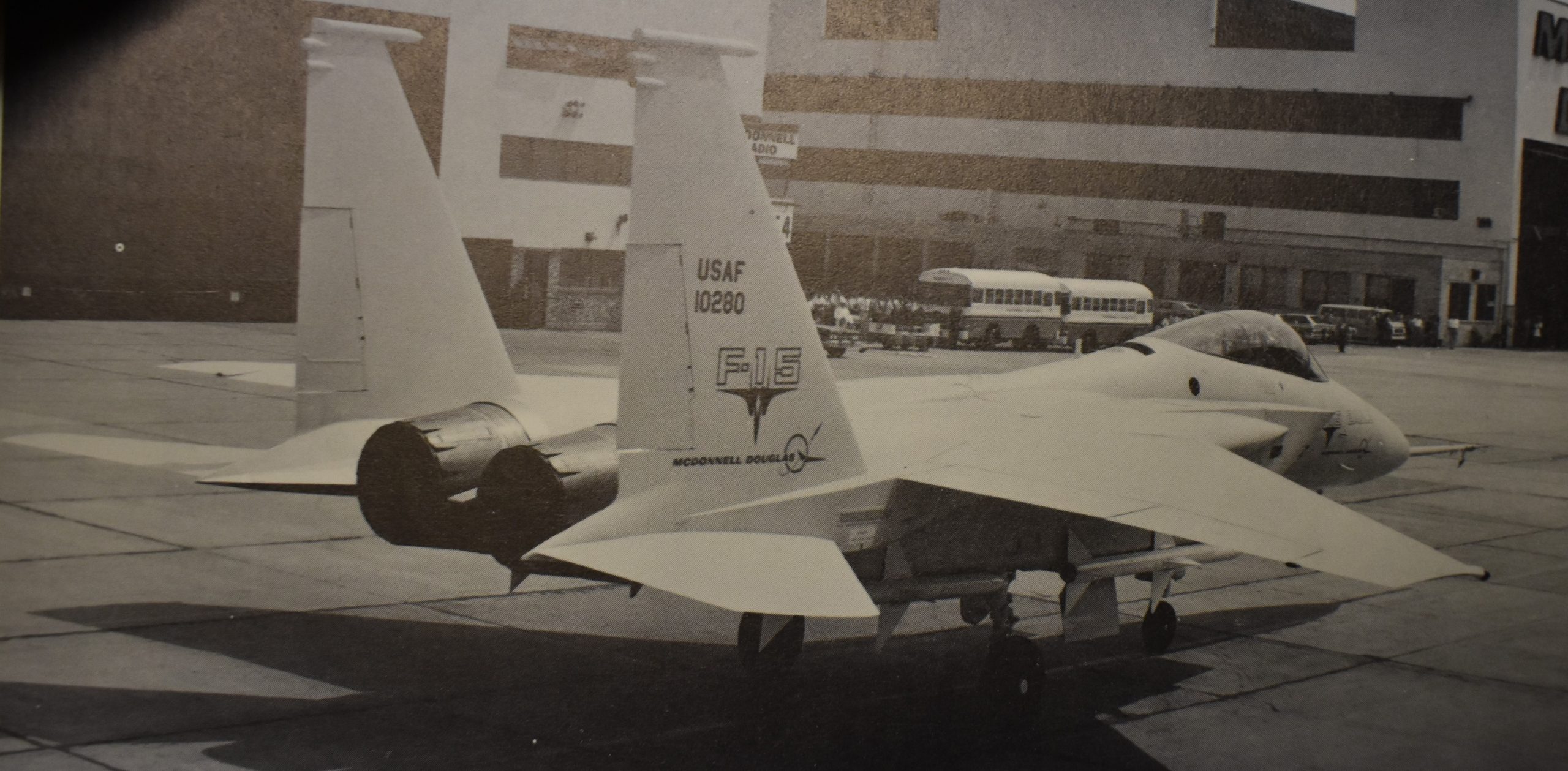
F-15A number one rolled out of the Saint Louis, Missouri, factory. Notice it does not yet have the DayGlo orange paint applied. McDonnell-Douglas photo, 26JUN1972.
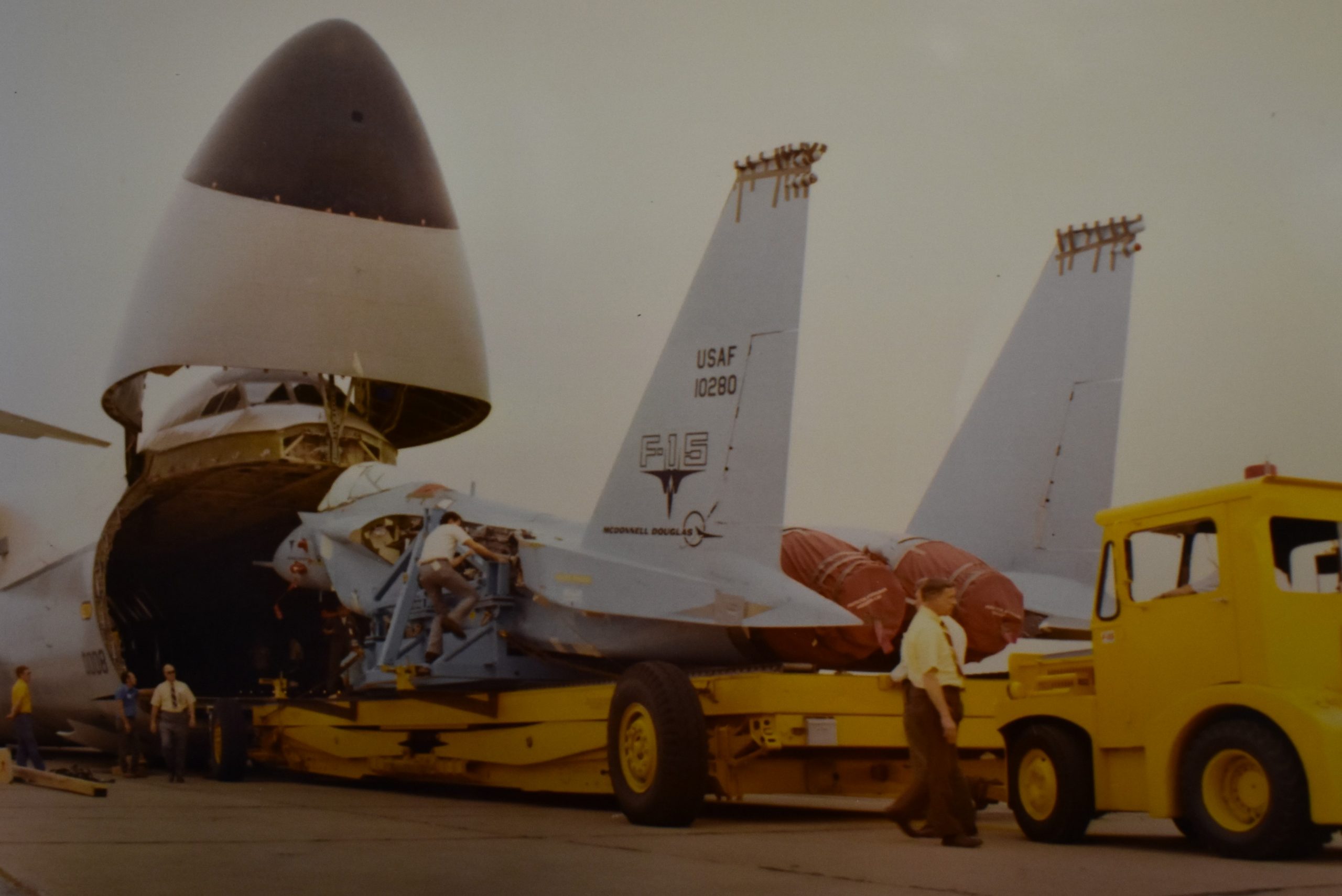
McDonnell-Douglas F-15A number one gets packed aboard a Lockheed C-5A Galaxy, for its trip to Edwards Air Force Base, California.
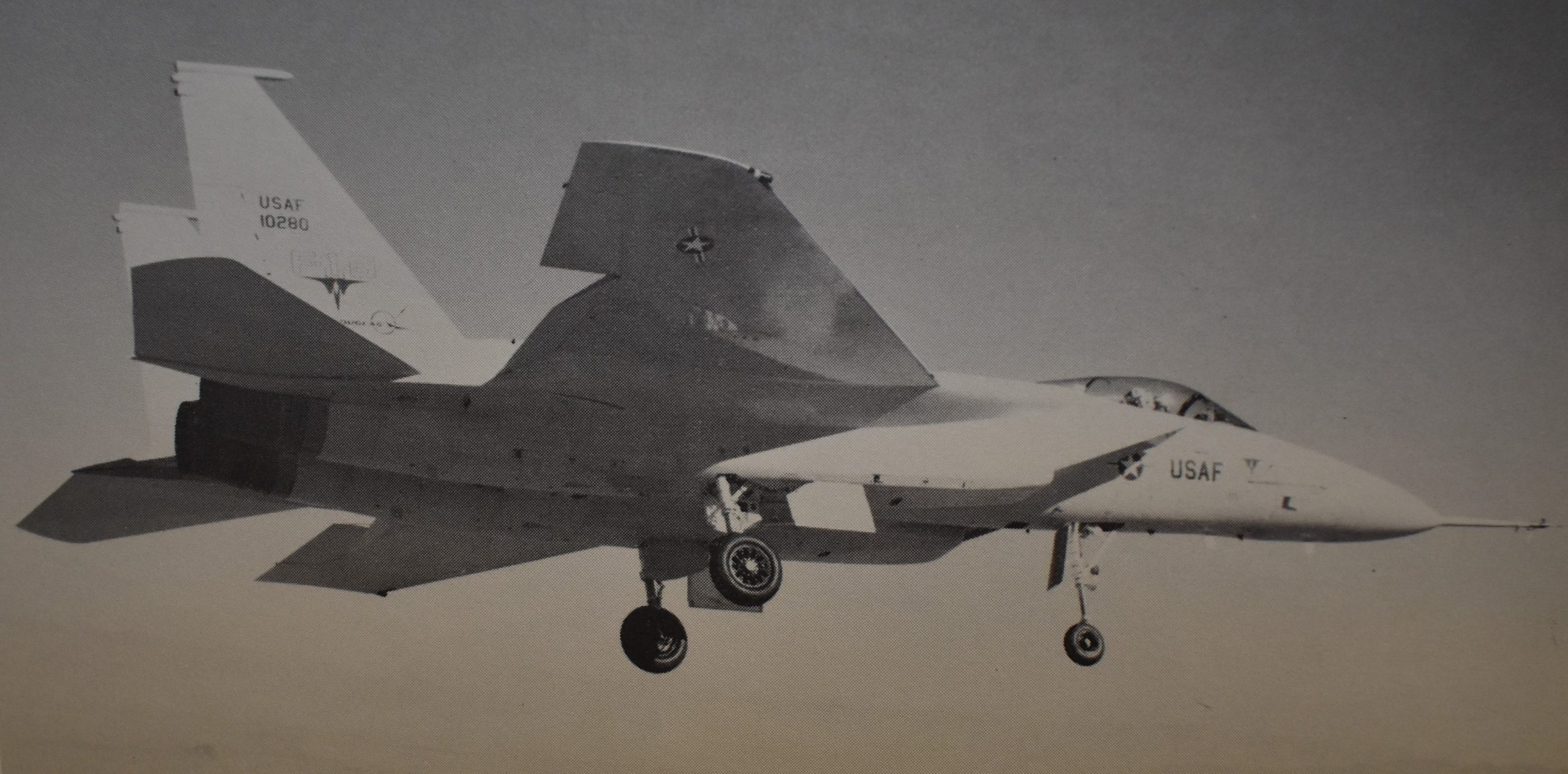
McDonnell-Douglas photo of the first flight of F-15 number one, 27JUL1972. DayGlo paint not yet applied. Notice the shape of the wings and stabilators.
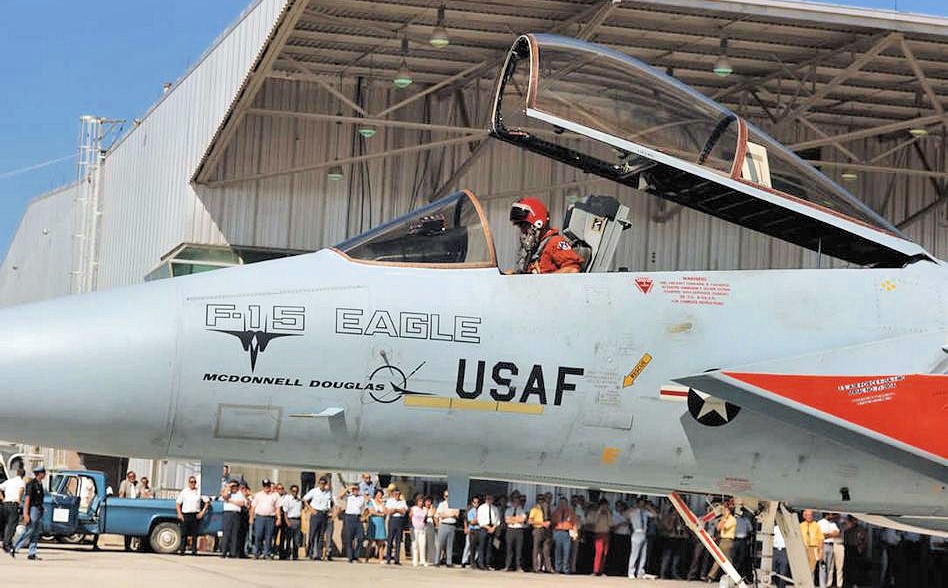
The first F-15A, #71-280, unveiled publicly after its first flight, July 1972, it now has the DayGlo paint applied. It was never called the YF-15 as several interweb sites say. From the beginning it was F-15 Eagle.
The McDonnell Douglas F-15A Eagle first took flight in 1972, beginning service in 1974. A total of 20 pre-production test and evaluation (T&E) Eagles were ordered, 12 for contactor (McDonnell-Douglas) development and eight specifically for the U.S. Air Force (USAF).
USAF promotional video, by Airman First Class Moses Taylor:
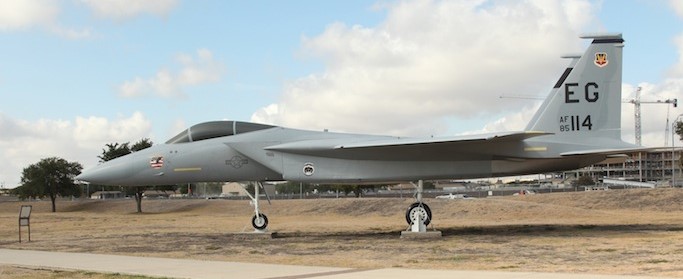
71-280 F-15A number one is now serving museum duty on Lackland AFB, Texas. However, it is painted to represent a different F-15.
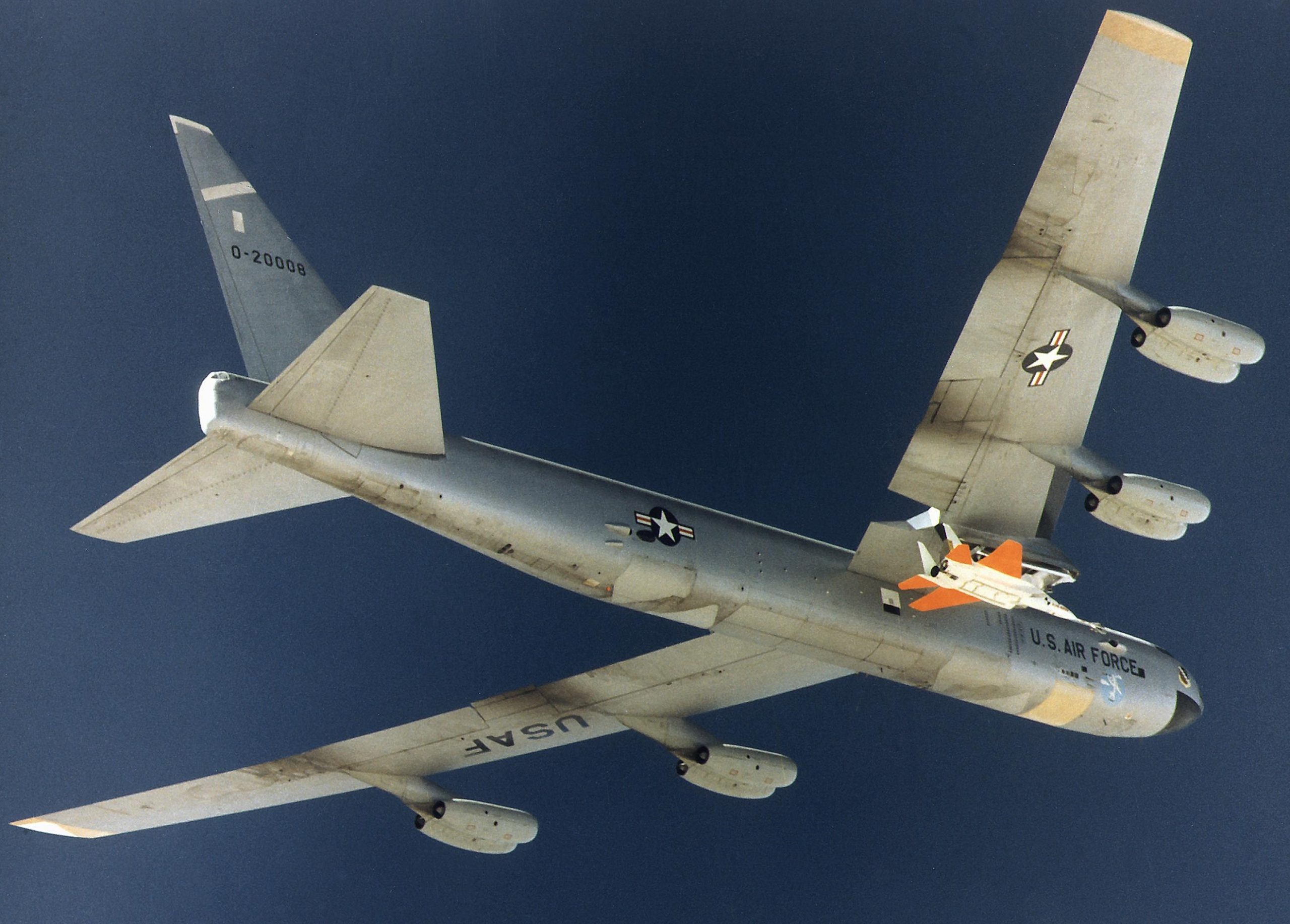
This B-52 is carrying a 3/8th-scale F-15A drone, back then called a Remotely Piloted Research Vehicle (RPRV), 23OCT1973. This was done to test the possibility of stall-spins, before the real F-15A Eagles began their test flights.
The 12 contractor F-15As were used in Category I pre-production T&E, the eight USAF F-15As were used in Category II pre-production T&E. They were never officially designated as prototypes or even called YF-15 (as some online sites say), they were officially called McAir F-1 (for the F-15A single seaters) and McAir F-2 (for the TF-15 two seaters). The Category I phase was later re-named Contractor Development, Test & Evaluation, the Category II phase was renamed Air Force Development, Test & Evaluation.
The wedge shaped F-15 engine air intake was also tested on the highly modified three engined F-106B.
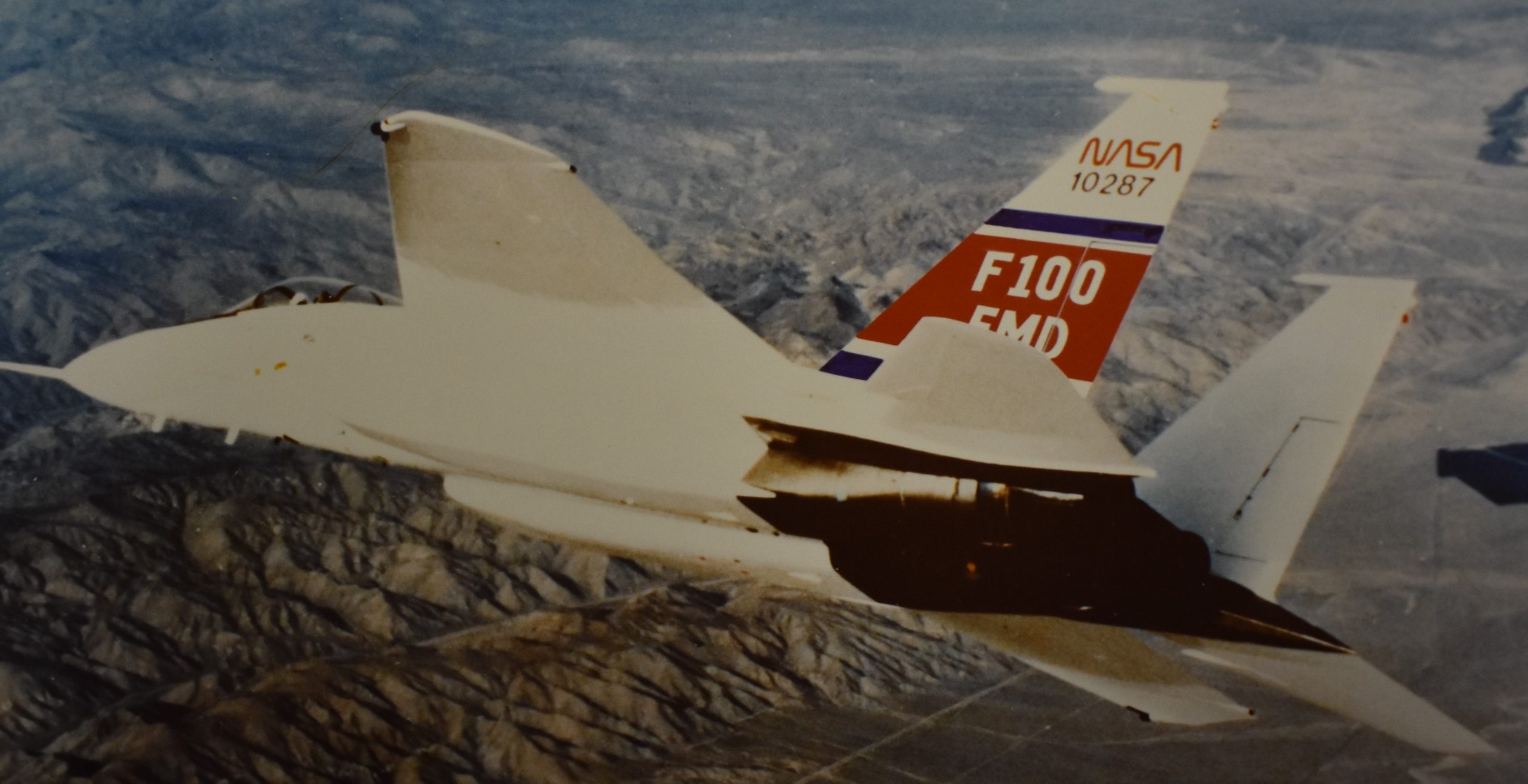
Photo via Edwards AFB photo shop. NASA’s F-15A 71-287 in 1976, testing the FMD version of Pratt & Whitney’s F-100. 287 would go on to test the HIDEC system, in the early 1990s.
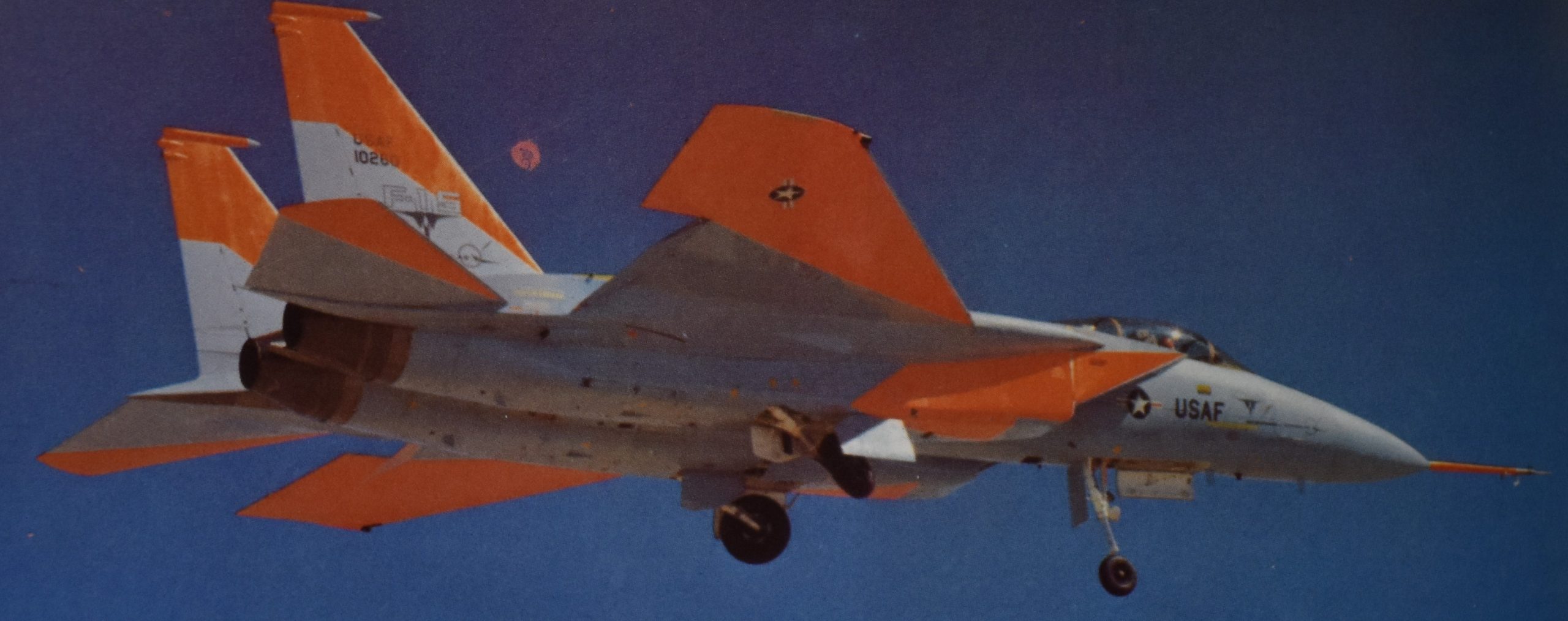
This photo shows a T&E Eagle (possibly number one) with the straight edged stabilators. McDonnell-Douglas photo.

This photo shows the smaller speed/dive brake of pre-production aircraft F-15A number five (71-284). It was apparently the first F-15 to get the 20mm Vulcan gun, obviously not at the time this photo was made (due to lack of gun port). McDonnell-Douglas photo.
The pre-production T&E Eagles can be distinguished from later production Eagles by the shape of the wing tips, the shape of the elevators (officially called ‘snag stabilators’) and the size of the speed/dive brake. T&E F-15As had squared-off wing tips, stabilators that did not have a ‘dog tooth’, and had a smaller more rectangular speed/dive brake. However, several T&E F-15 Eagles were quickly updated with the snag stabilators, yet retained the original wing tips and small speed brake.
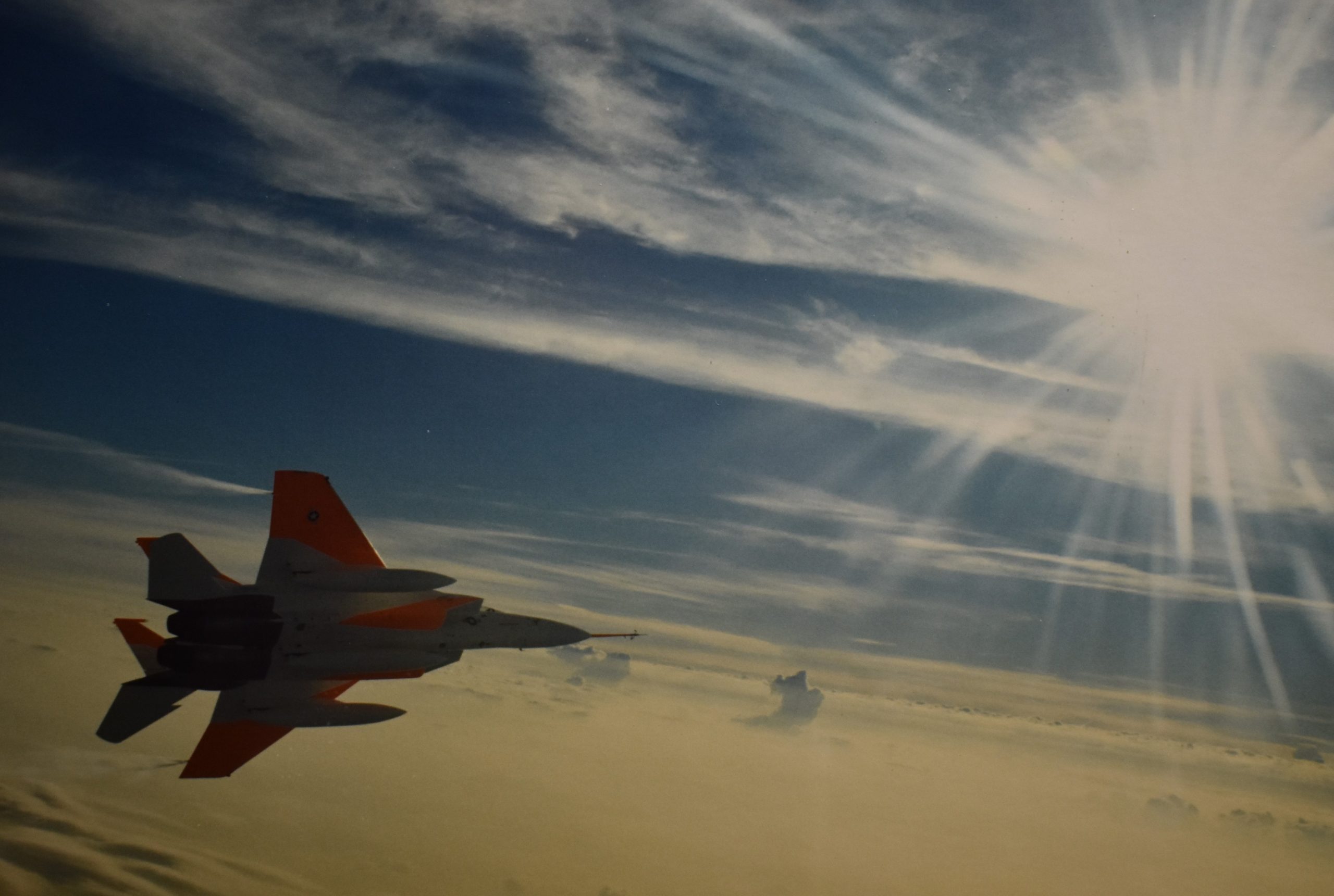
This photo shows one of the T&E Eagles updated with the snaggle toothed stabilators. USAF photo via the Edwards AFB photo shop, I got it in the mid-’70s but exact date it was made is unknown.
For kit builders, the first issue 1:72 scale Hasegawa, Revell U.S.A. and Monogram kits were based on the Category I McAir F-1 Eagles.
They were quickly revised once the final changes were established for the production F-15s.
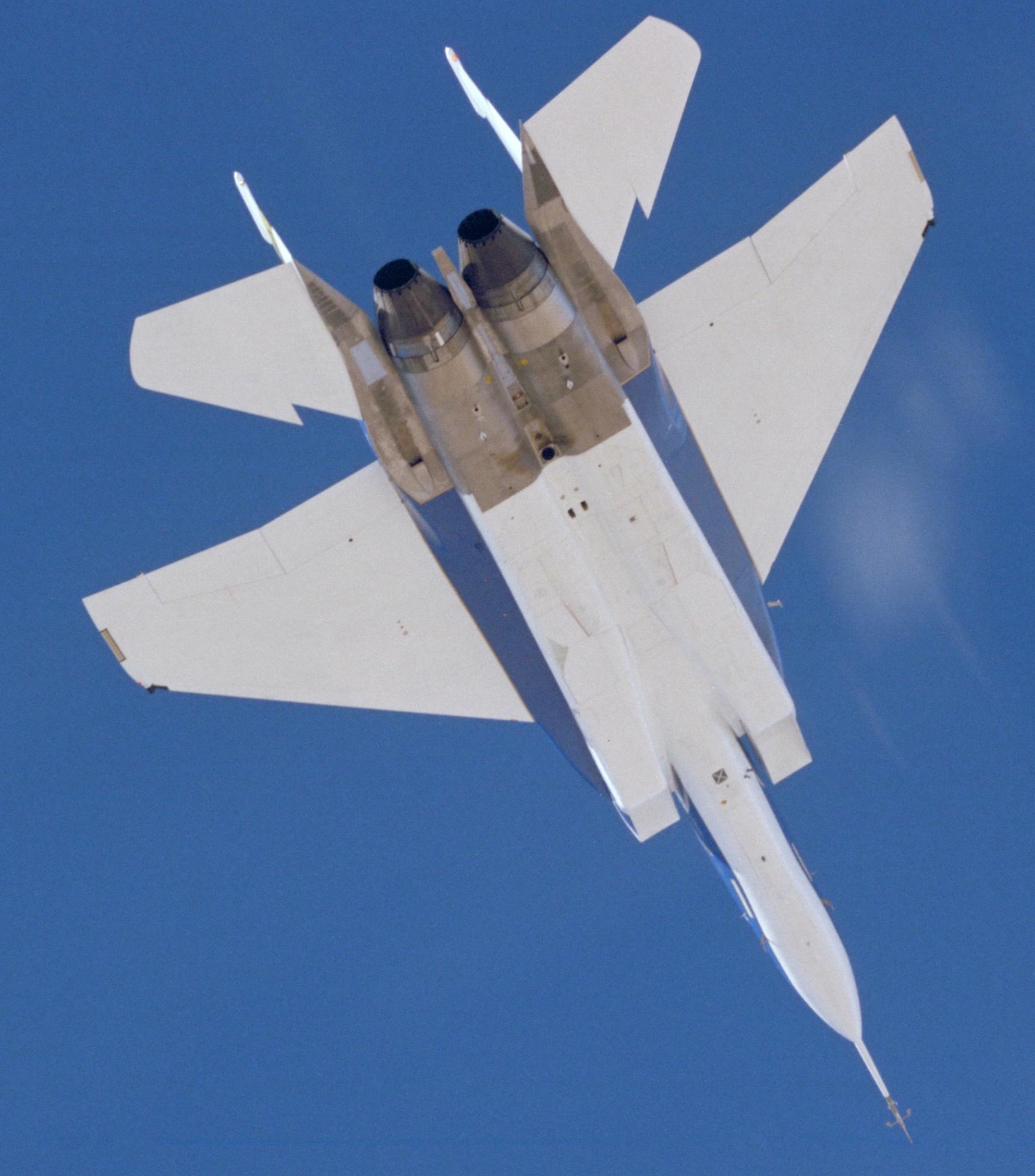
The same T&E F-15, with the squared-off wing tips, but it has been updated with the dog-tooth elevators. NASA photo, 24FEB1978.
Development of the F-15A actually started in the late 1960s, it was designed as a pure dog-fighter, intended to replace the F-4 Phantom-2 in that role. The design was based on U.S. air combat experience over Viet Nam, and on incorrect assumptions about Soviet fighter development, especially the MiG-25 Foxbat.
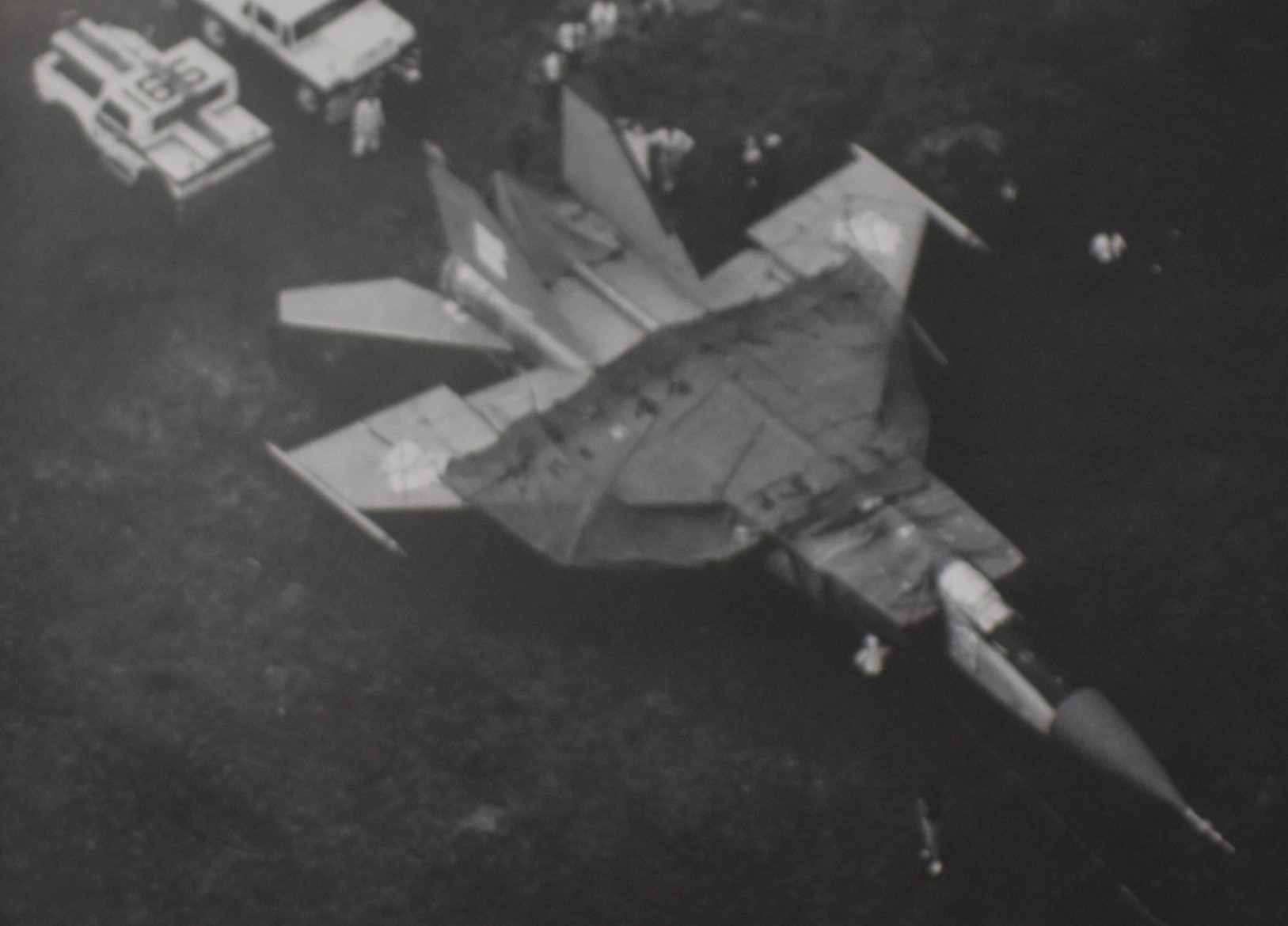
The defected MiG 25P. This is the photo that inspired the artwork on Minicraft/Hasegawa’s black bordered box issue of their MiG 25 kit, in the late-1970s.
Before the defection of a Soviet pilot in a MiG-25P, to Japan in 1976, the ‘experts’ in the U.S. Department of Defense thought the Foxbat was a dog-fighter. The MiG-25 was actually a straight line Mach 3 bomber interceptor, it carried four long range anti-bomber missiles, and had no guns. Fortunately, the incorrect assumptions resulted in a still potent modern day dog-fighter (proven by the Israeli Air Force) that has also proved it excels at other forms of aerial combat.
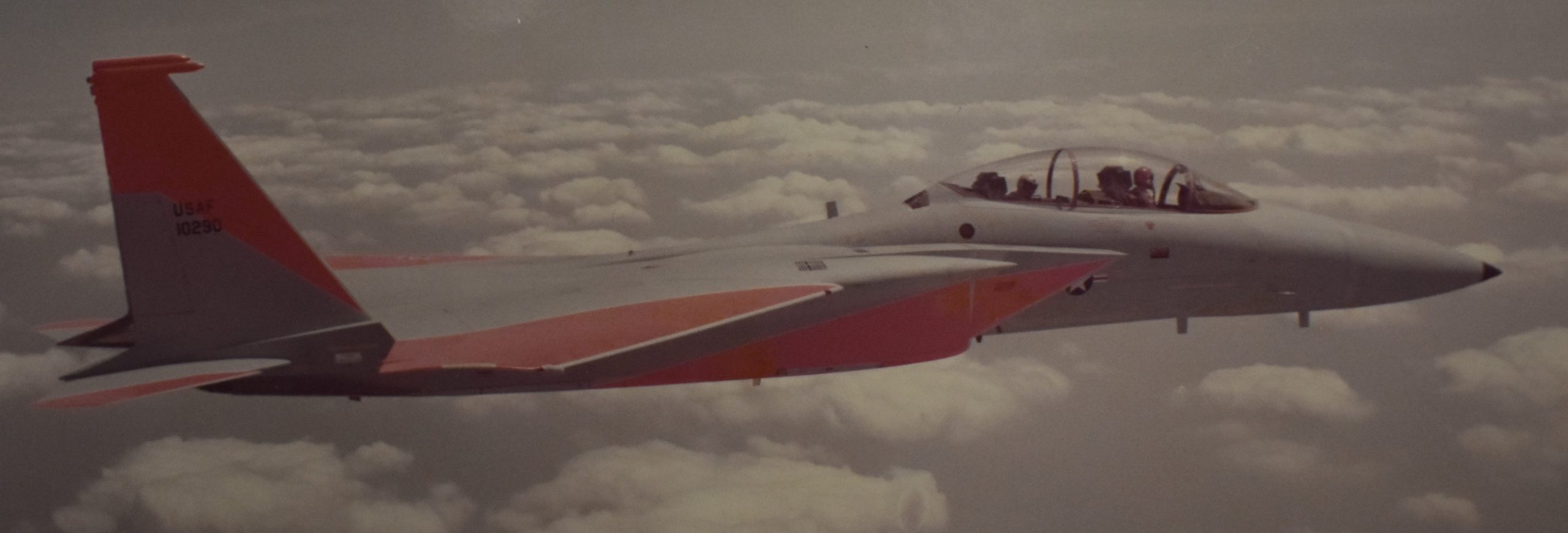
TF-15A #71-290. Photo via the Edwards AFB photo shop. 290’s final mission would be as the NF-15B ACTIVE in the late 1990s.
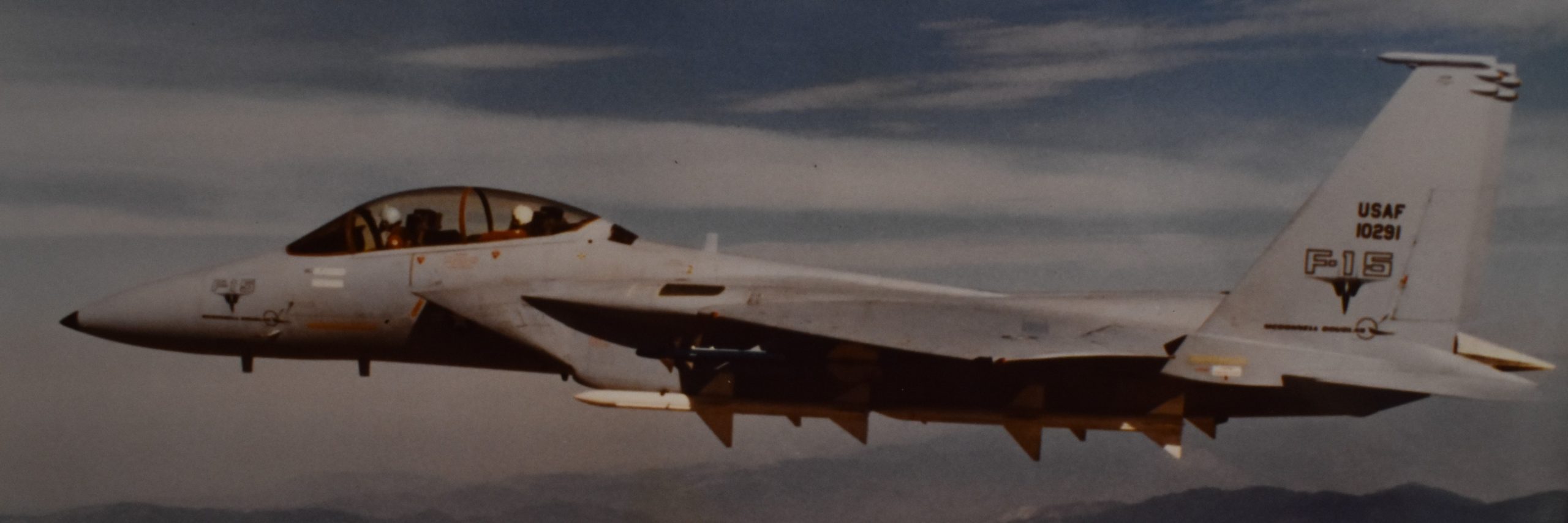
I got this photo from the Edwards AFB photo shop in the mid-1970s. It is TF-15A/F-15B 71-291, which would go on to become the ‘demonstrator’ (mock-up) of the F-15E concept.
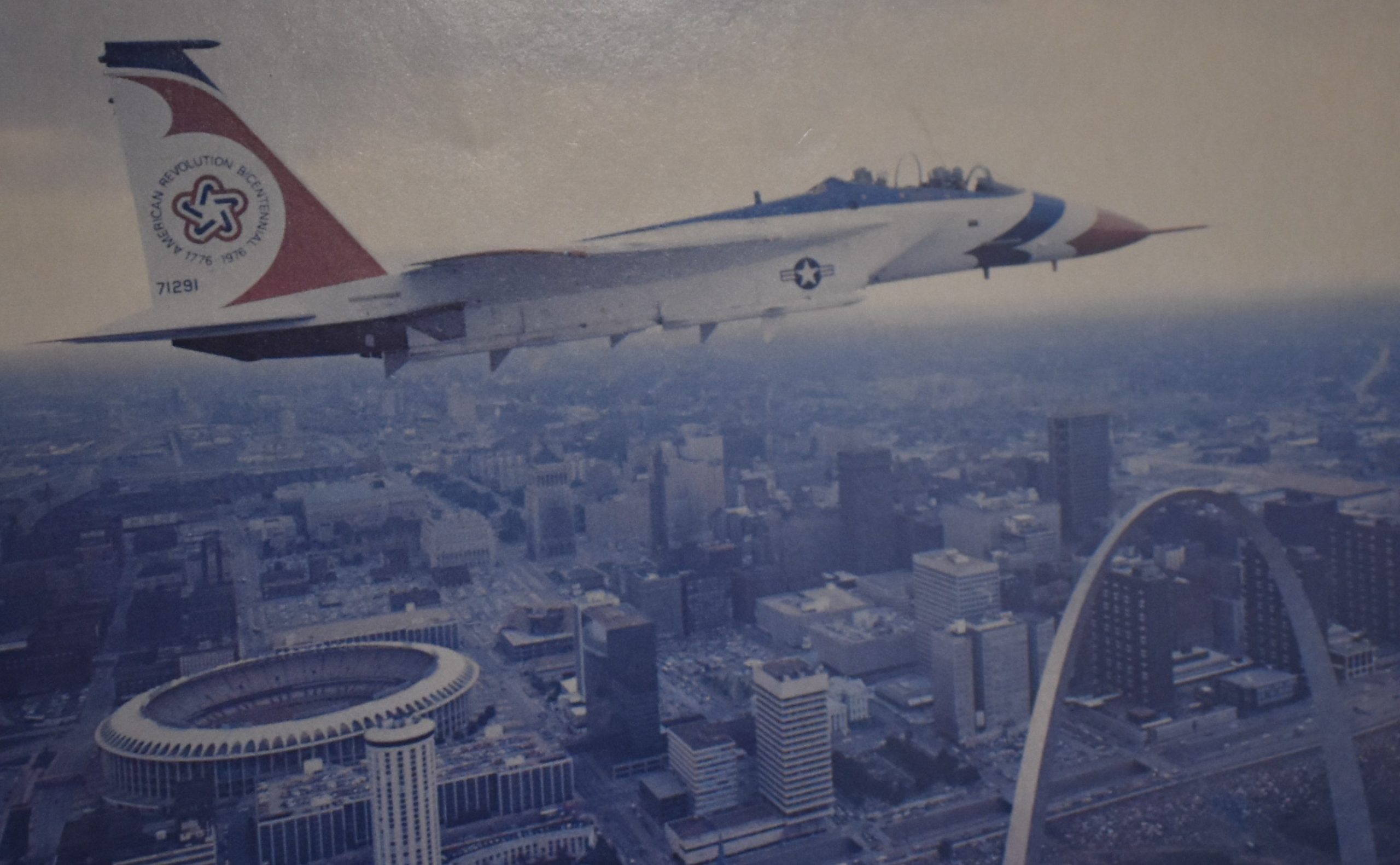
71-291 all gussied-up for the Bicentennial in July 1976, and flying over its birthplace of Saint Louis, Missouri. McDonnell-Douglas photo by Pat McManus.
Also in 1972, a combat capable trainer version was created called the TF-15A, but it was soon re-designated F-15B. The improved F-15C single seater, and the improved F-15D two seater, were created in 1979. Visually they all look the same as the improvements are internal.
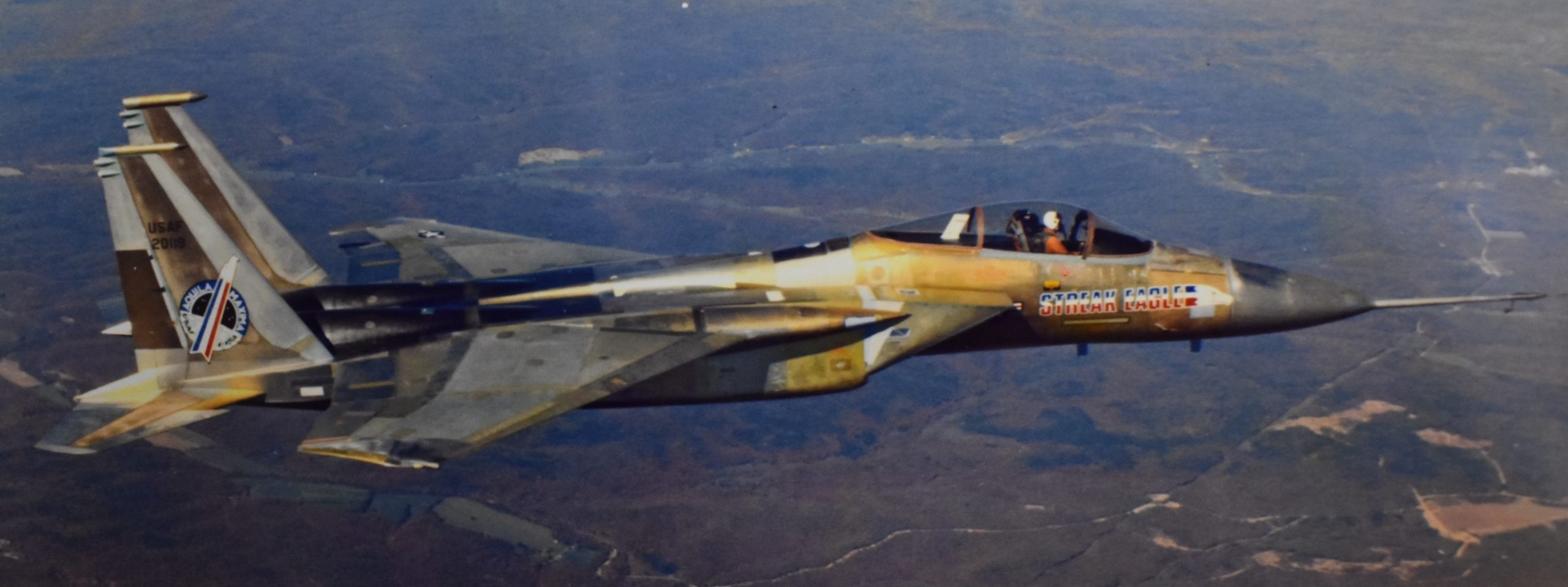
Bare metal Streak Eagle, named because it was naked, not fast. In the 1970s there was a fad called streaking, which meant you got naked and ran as fast as you could through a public gathering. The insignia on the vertical tail was removed for the high speed runs.
Between 16JAN1975 and 01FEB1975, a bare metal F-15A nicknamed Streak Eagle, broke eight time-to-climb world records. It was then donated to the National Museum of the U.S. Air Force, in 1980, where it was painted to protect from corrosion:
The F-15 is used by Israel, Japan, Qatar, Saudi Arabia, Singapore, South Korea and the United States.
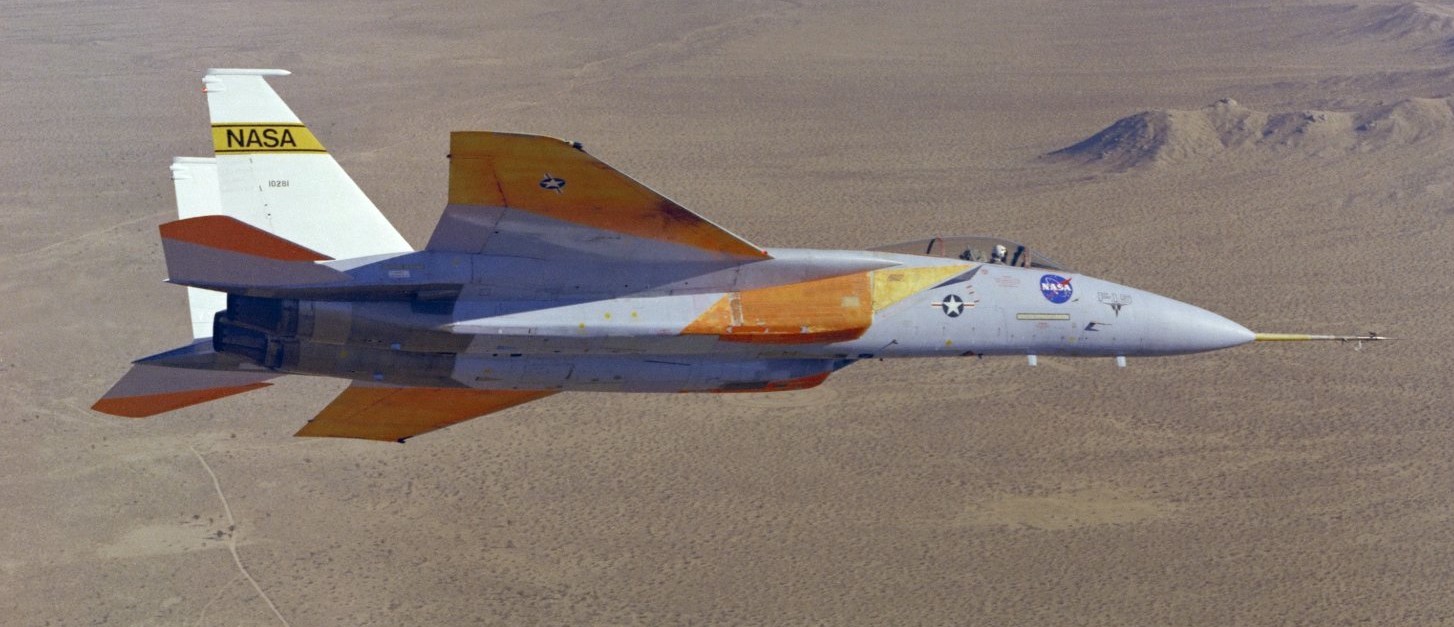
The second F-15A Eagle (71-0281) was turned over to NASA in February 1976. It was used in no less than 25 experiments which not only benefitted the USAF and NASA, but also the civilian airliner industry.
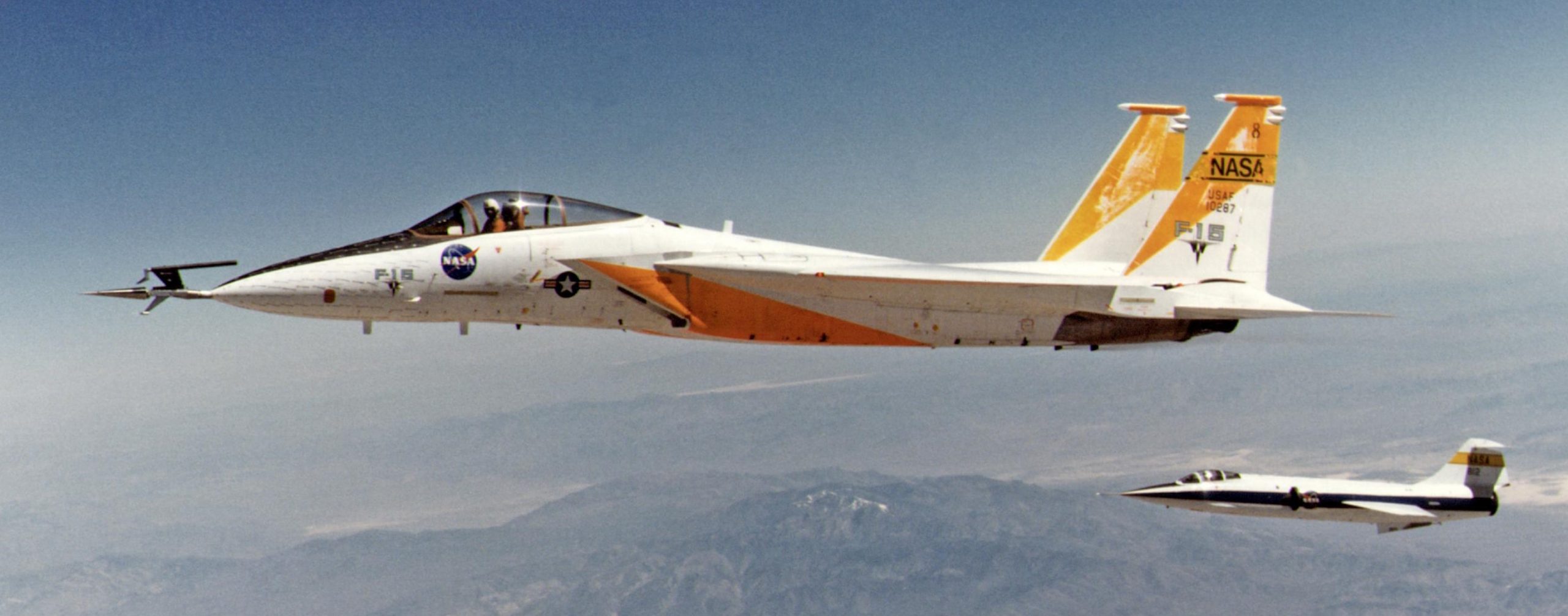
This NASA F-15A Eagle was used to compare actual in-flight aerodynamic data to data collected from models in wind tunnels, 17MAY1978.
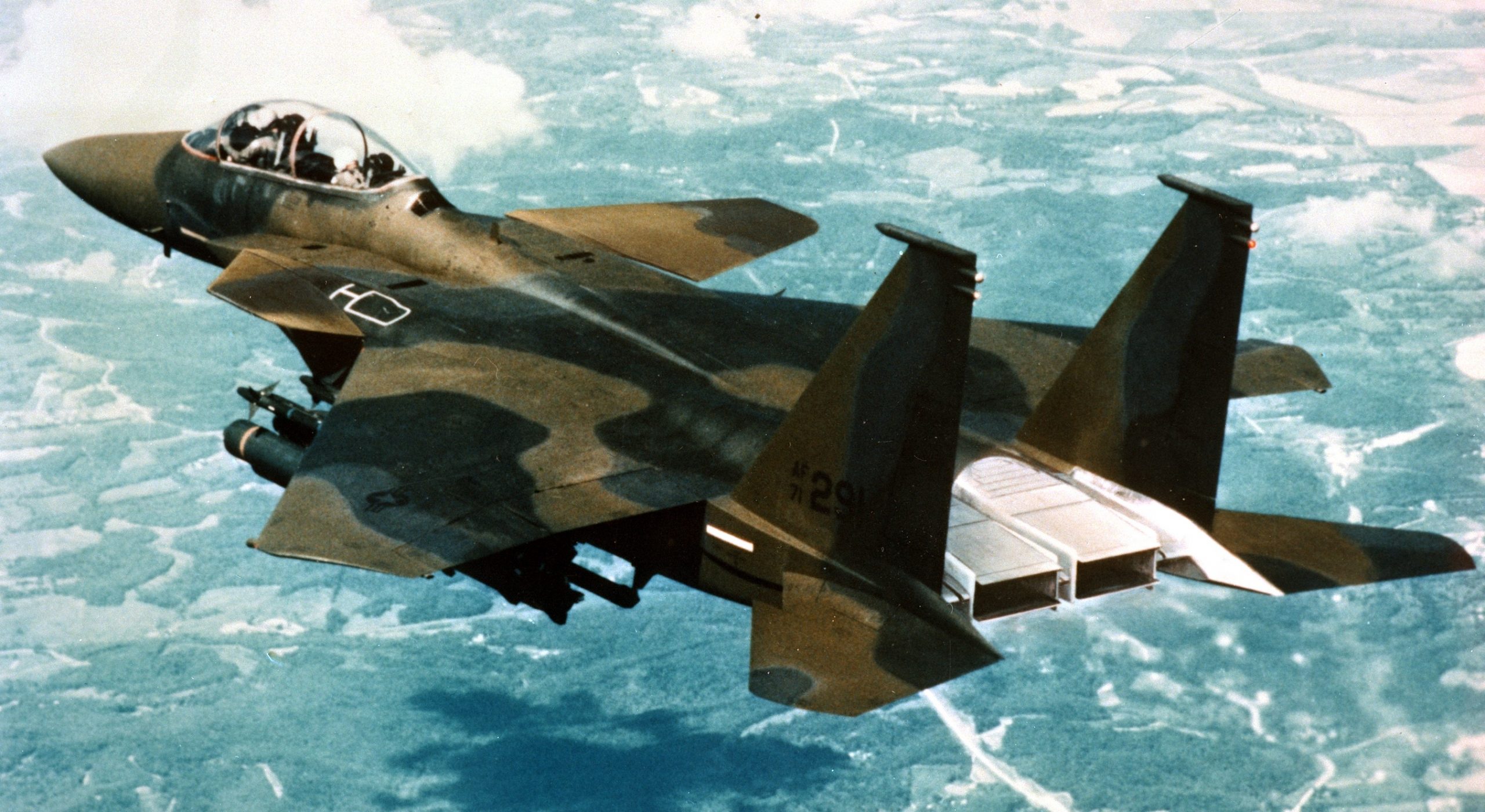
This is a NASA image showing what their proposed F-15-2D/STOL/MTD would look like, using NASA’s F-15B Eagle. The project would morph into the NF-15B ACTIVE program in the late 1990s.
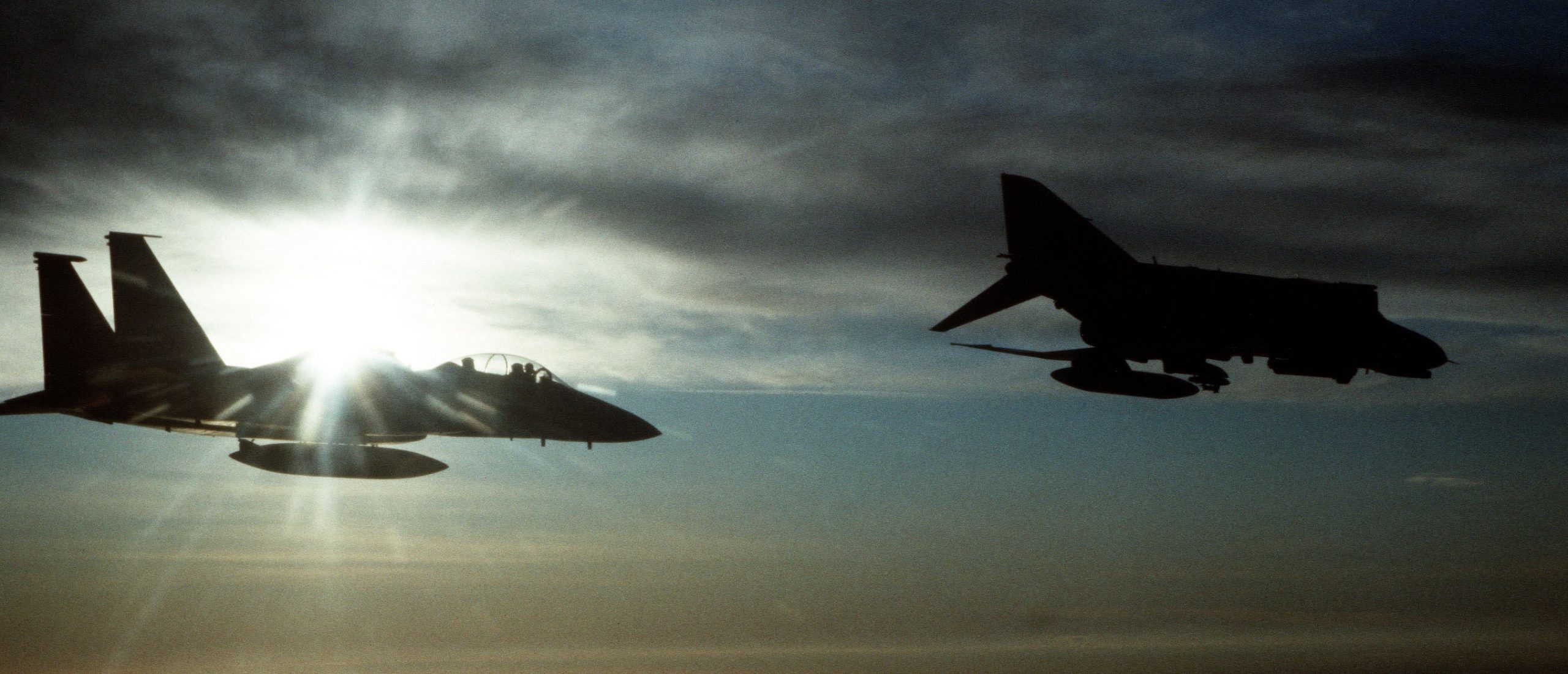
Somewhere over NATO Norway, the Sun is setting on an F-4E Phantom-2, while its replacement, an F-15B Eagle flies in formation. USAF photo by Master Sergeant Edward Condon, 08MAR1982.
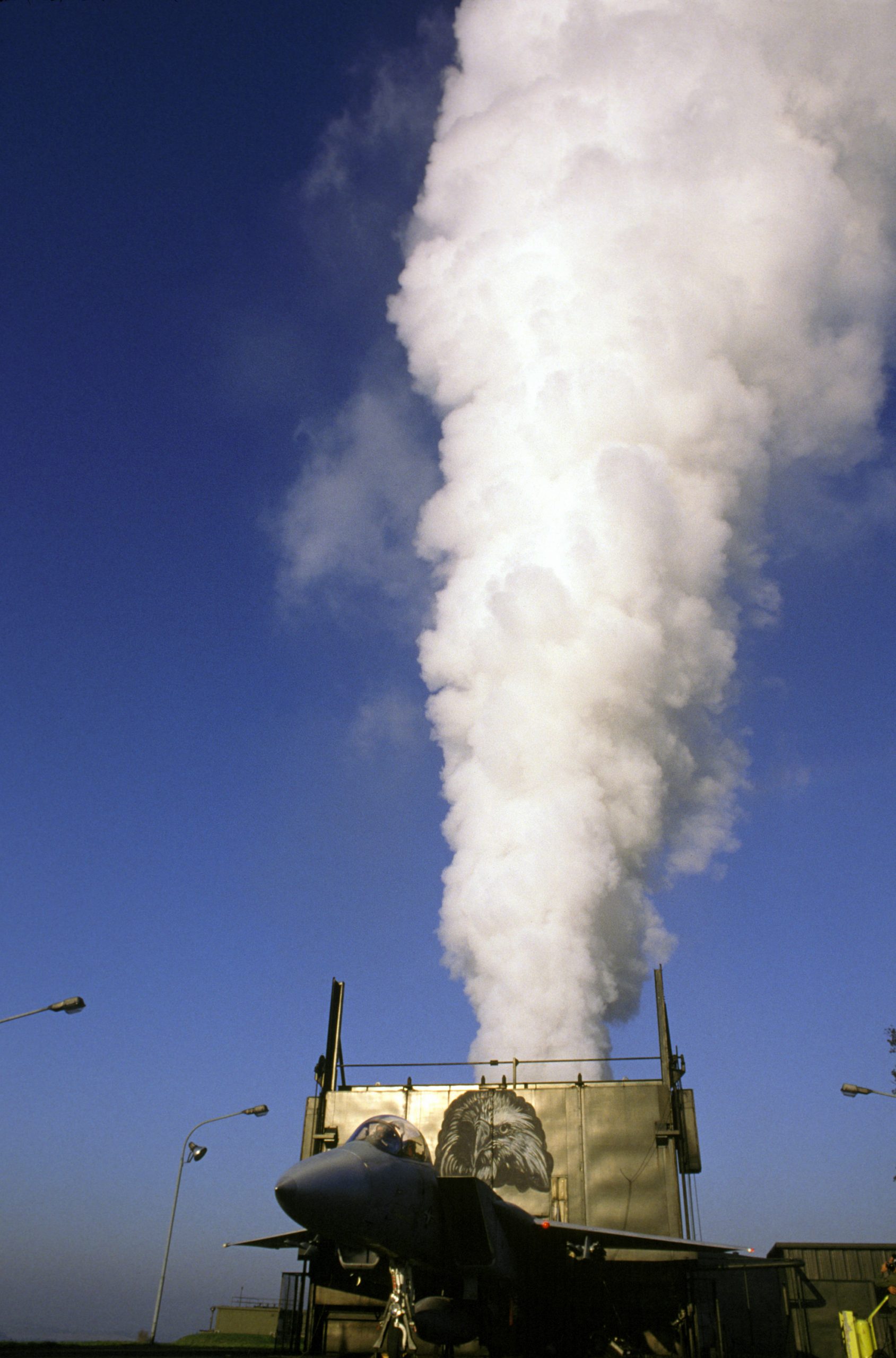
On Bitburg AFB, West Germany, an F-15D Eagle blows off steam, at full throttle in a ‘Baker Sound Suppressor Unit’. USAF photo by Jose Lopez Junior, November 1984.
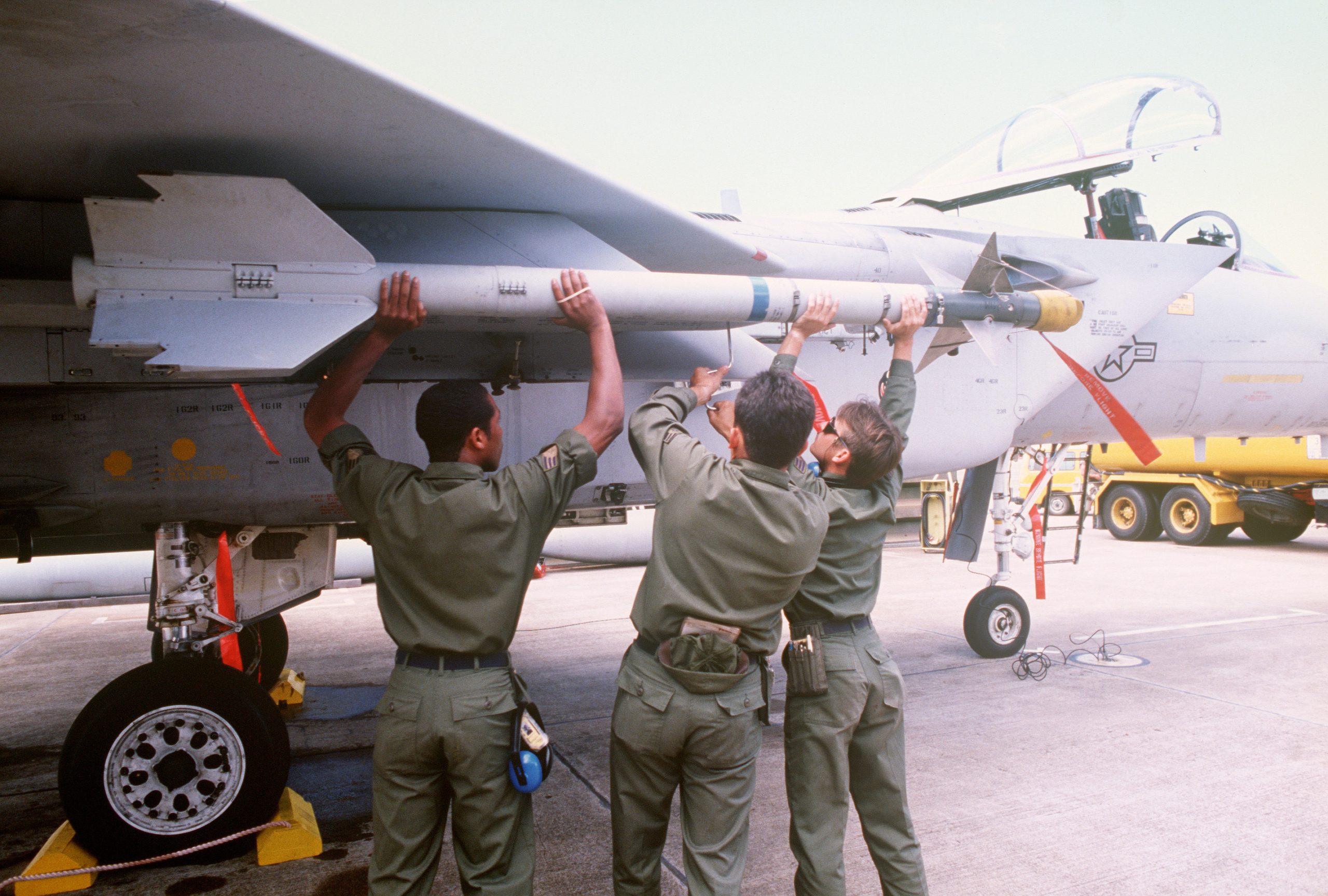
An F-15A Eagle gets armed with an AIM-9 Sidewinder anti-aircraft missile, while taking part in wargames over Australia, 01OCT1985. U.S. Air Force photo by Staff Sergeant Marvin D. Lynchard.
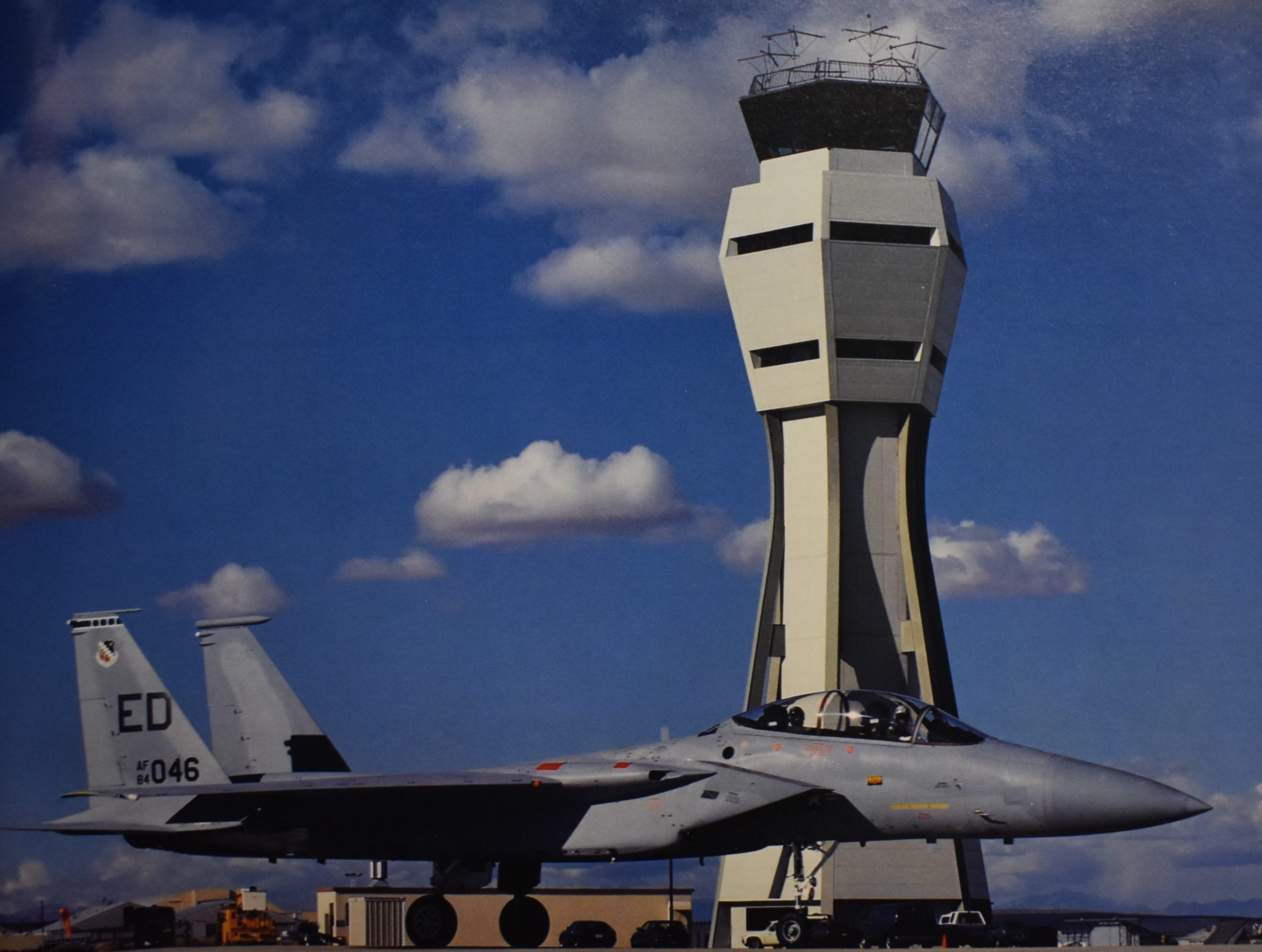
An F-15B Eagle taxis past the then new air traffic control tower on Edwards AFB, sometime in the mid 1980s (1987?).
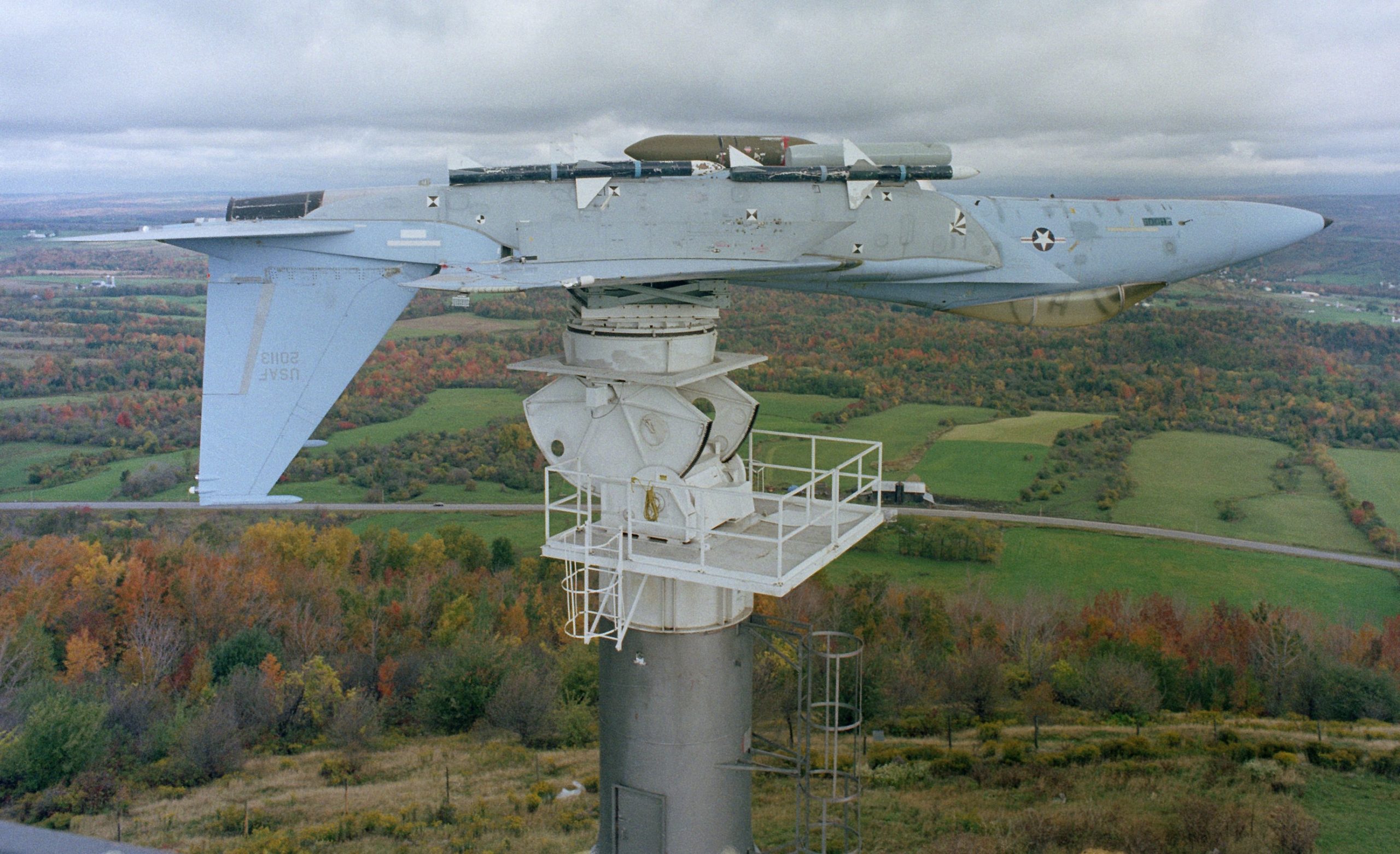
A pole dancing F-15C Eagle? It is mounted upside down on a pedestal at the Rome Air Development Center’s (aka USAF Super Lab) Newport, New York, test site. An external radar warning system pod mounted on the fuselage is being compared to the onboard radar warning system, 06OCT1988.
The ground attack F-15E Strike Eagle began service in 1989, however, the first production F-15E (86-183) came off the assembly line in 1986.
At first it was just called the F-15E Dual Role Fighter, no Strike Eagle. They stenciled on the nose F-15E No. 1, to be clear that it is the first F-15E.
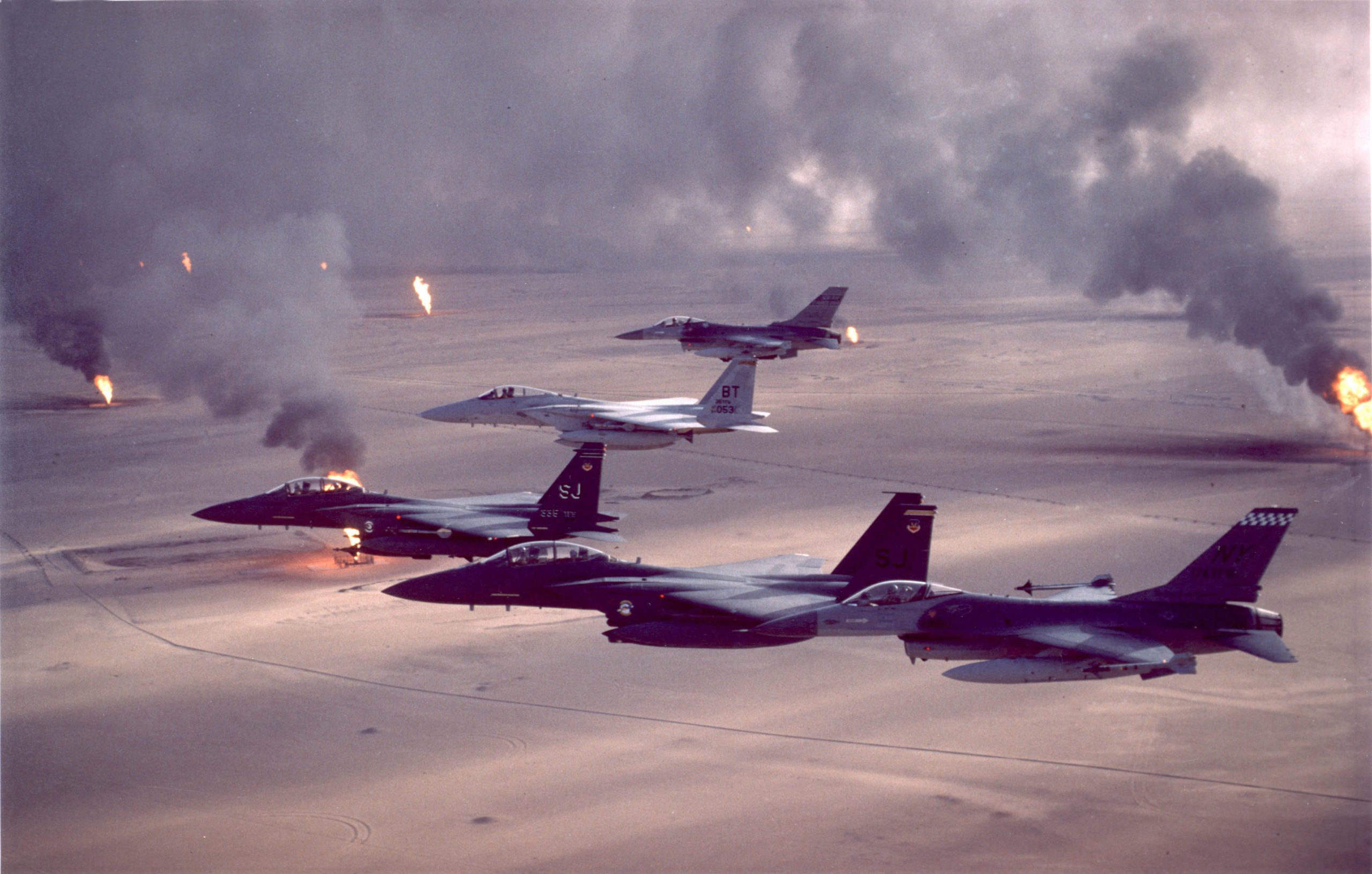
F-15E Strike Eagles, and a F-15C Eagle, are flanked by F-16s as they fly over burning oil wells, during Desert Storm in early 1991.
Cold War: Approximately 1947 (due to U.S. President Harry Truman’s Truman Doctrine) to 1991 (Operation Desert Storm, collapse of Soviet Union).
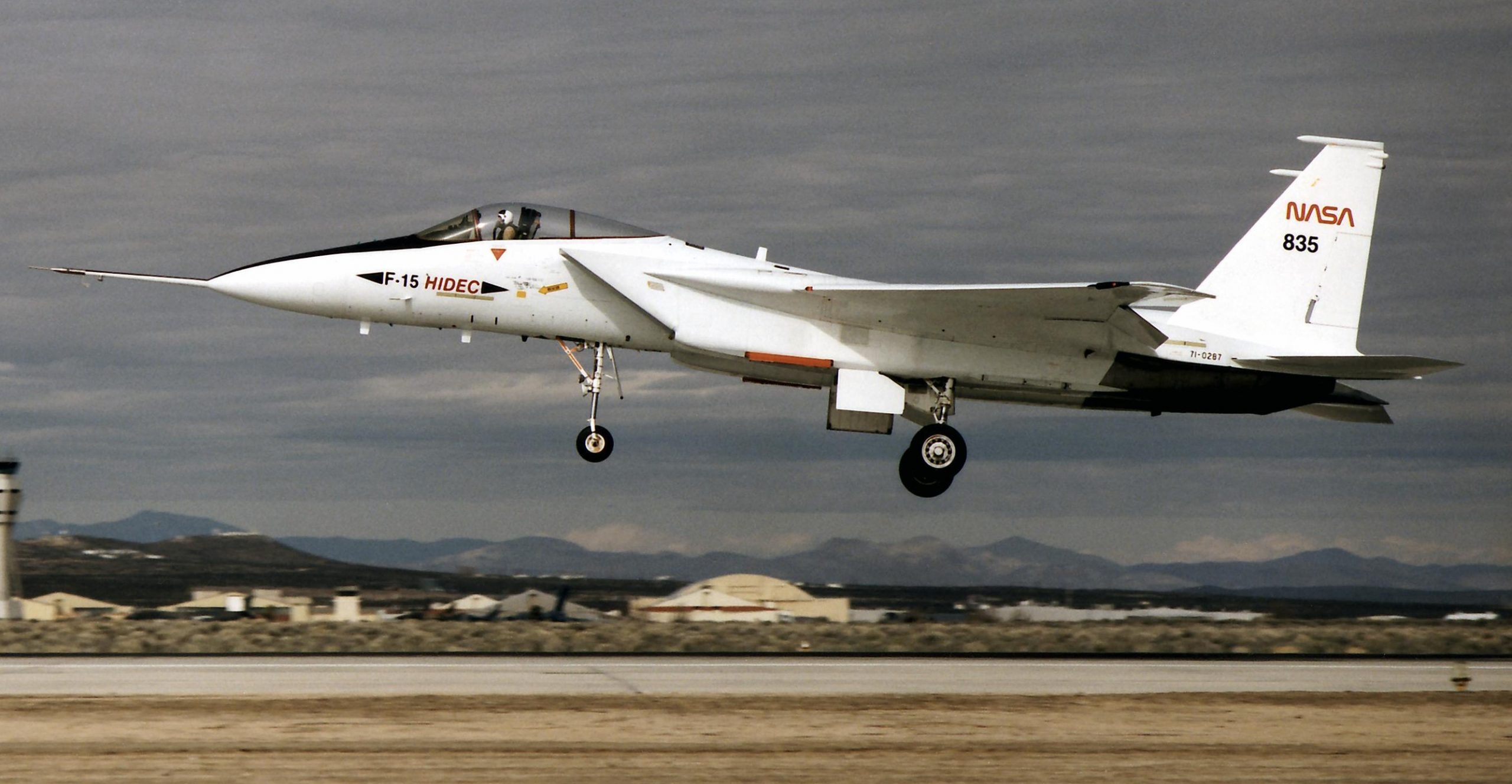
NASA’s HIDEC (Highly Integrated Digital Electronic Control) F-15A (NASA #835, USAF #71-287), Dryden Flight Research Center, Edwards AFB, California, February 1993.
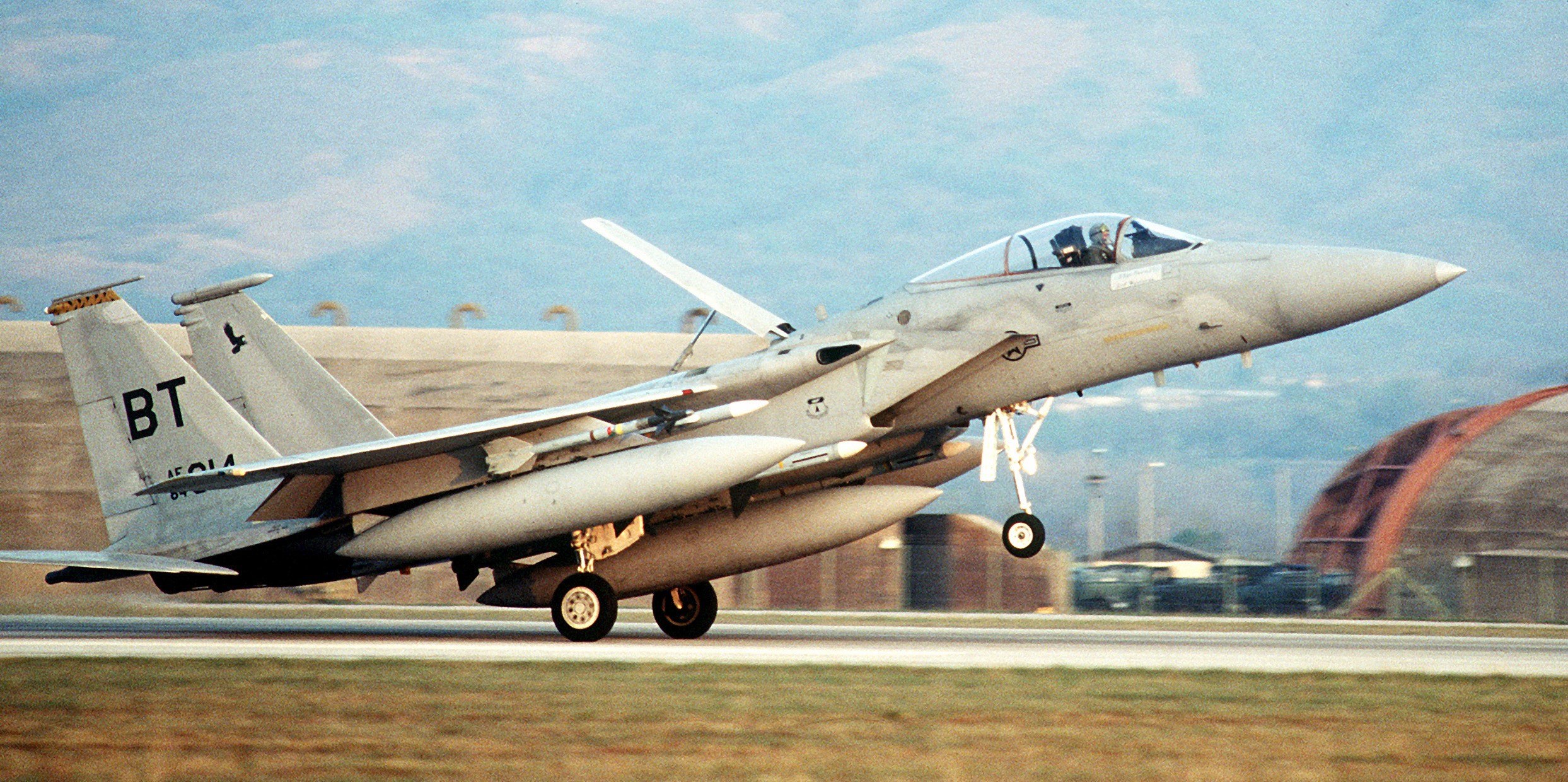
A 53rd Fighter Squadron F-15C Eagle returns to Aviano Air Base, Italy, after a No-Fly-Zone mission over Bosnia-Herzegovina. USAF photo by Technical Sergeant David Mcleod, 12APR1993.
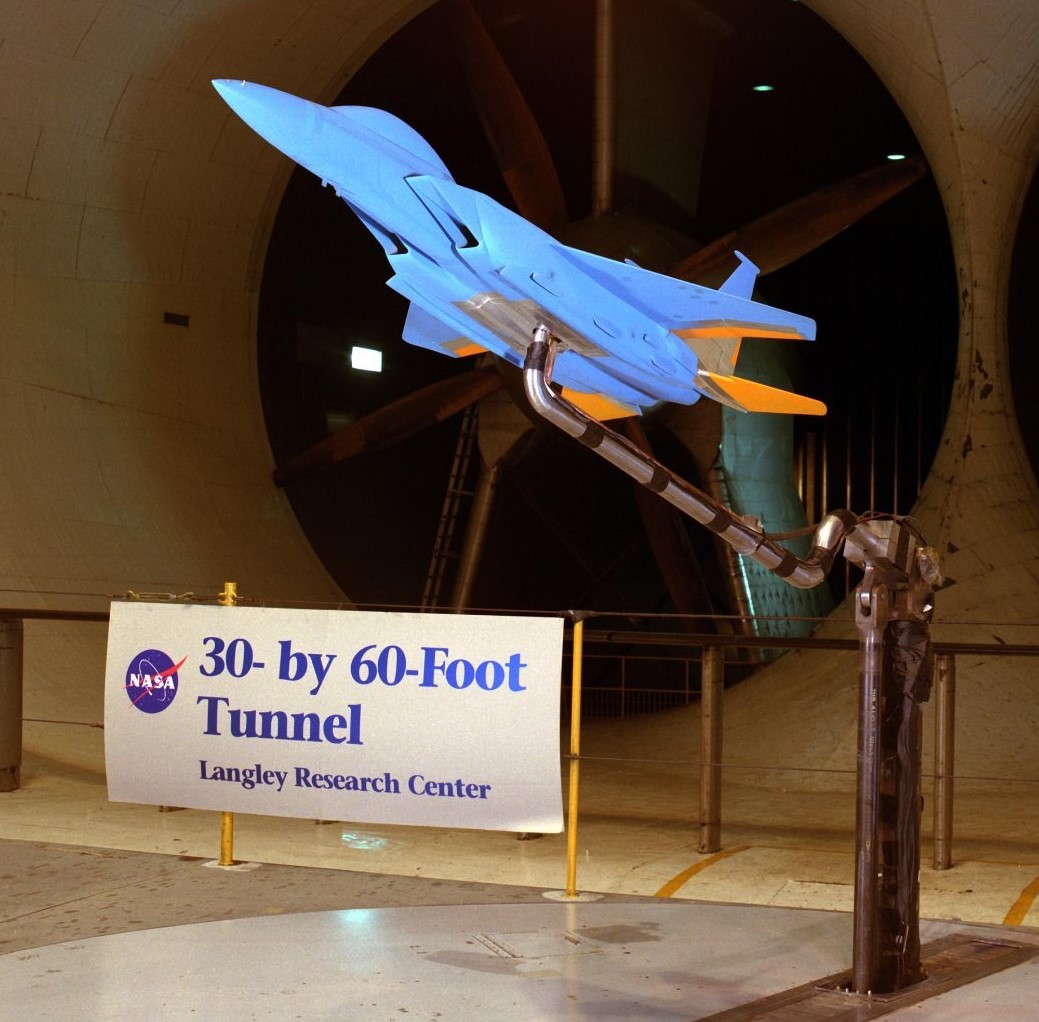
A 10% scale wind tunnel model of the F-15E Strike Eagle, used to test the viability of ‘pneumatic forebody controls’, September 1994.
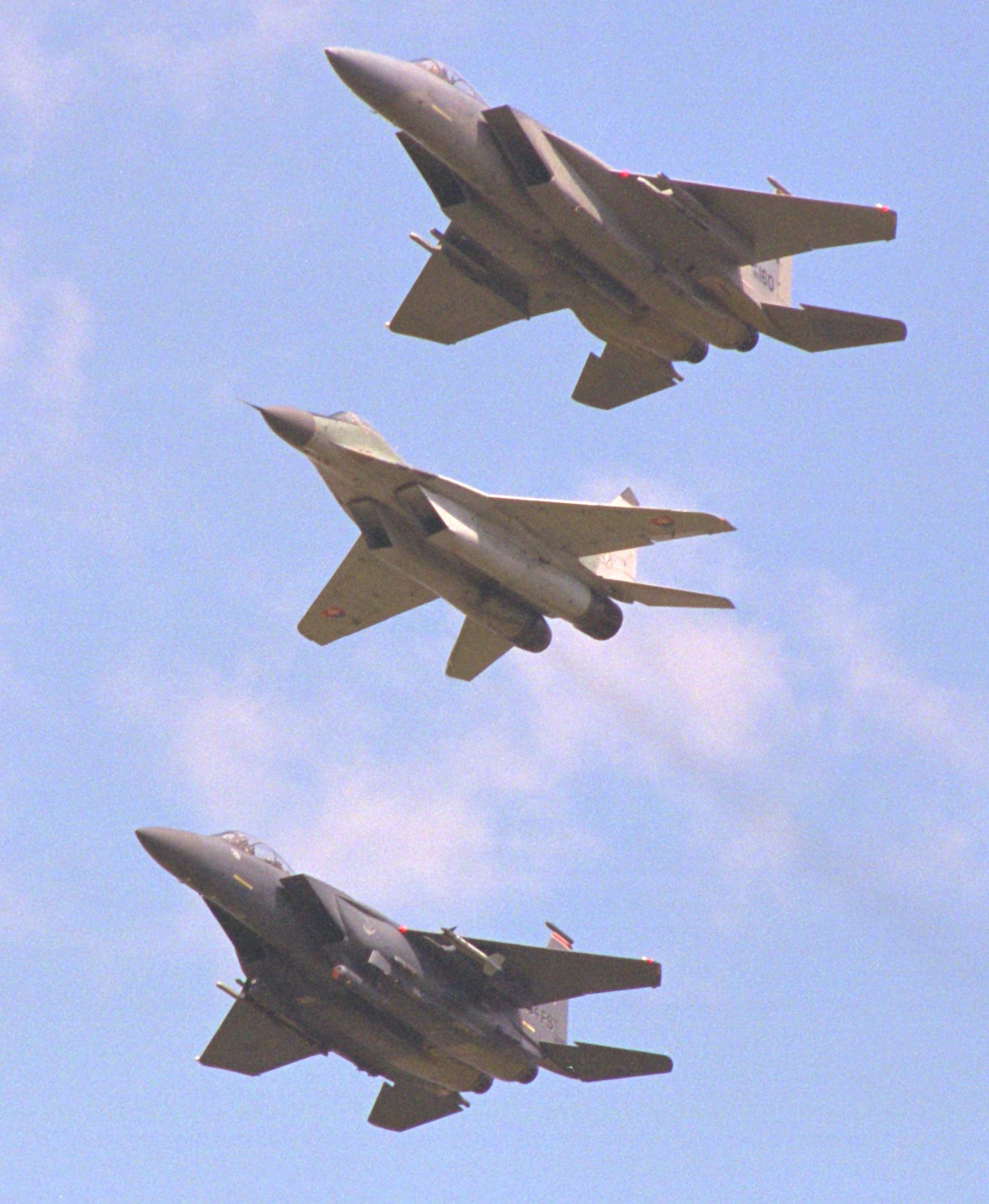
Size comparison between USAF F-15C Eagle & E Strike Eagle, and a Slovak MiG-29 Fulcrum. According to the USAF, this was the first time F-15 Eagles and MiG-29s flew together. Photo by Technical Sergeant Brad Fallin, 25MAY1996.
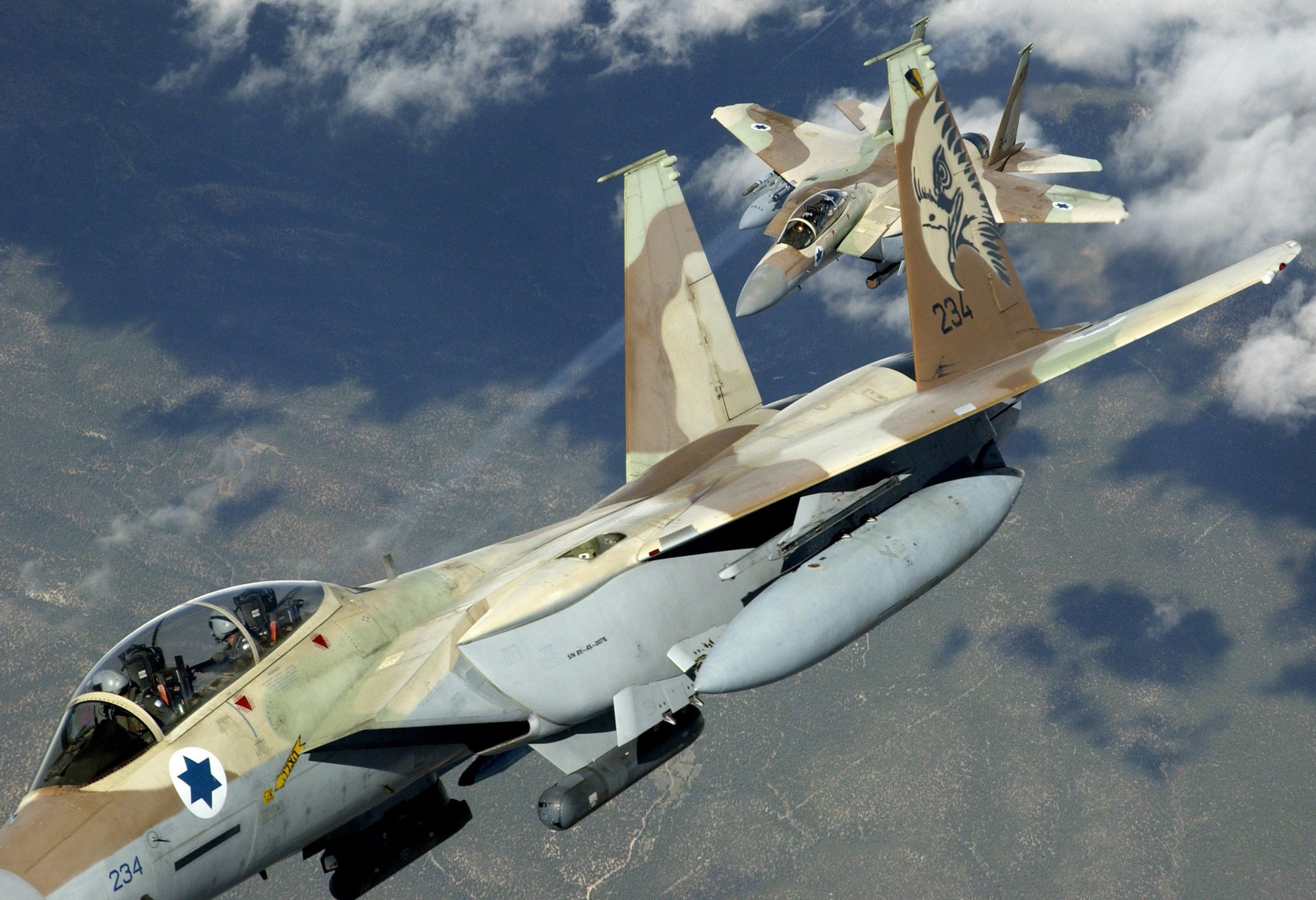
Two Israeli Defense Force F-15I Ra’am over Nellis AFB, Nevada. USAF photo by Technical Sergeant Kevin J. Gruenwald, 25AUG2004.
F-15E Strike Eagles using the Dare County Bomb Range, in North Carolina, July 2012. USAF video by Airman First Class Samantha Ducker:
December 2012:
For first time, JAPAN SCAMBLES F-15Js TO INTERCEPT CHINESE AIRCRAFT
NATO 2013:
May 2016:
OREGON KOTKAT LENTÄÄ SUOMEN YLI
USAF video, by Staff Sergeant Esteban Esquivel, of Israeli F-15I Ra’am operations on Uvda Air Base, Israel, May 2017:
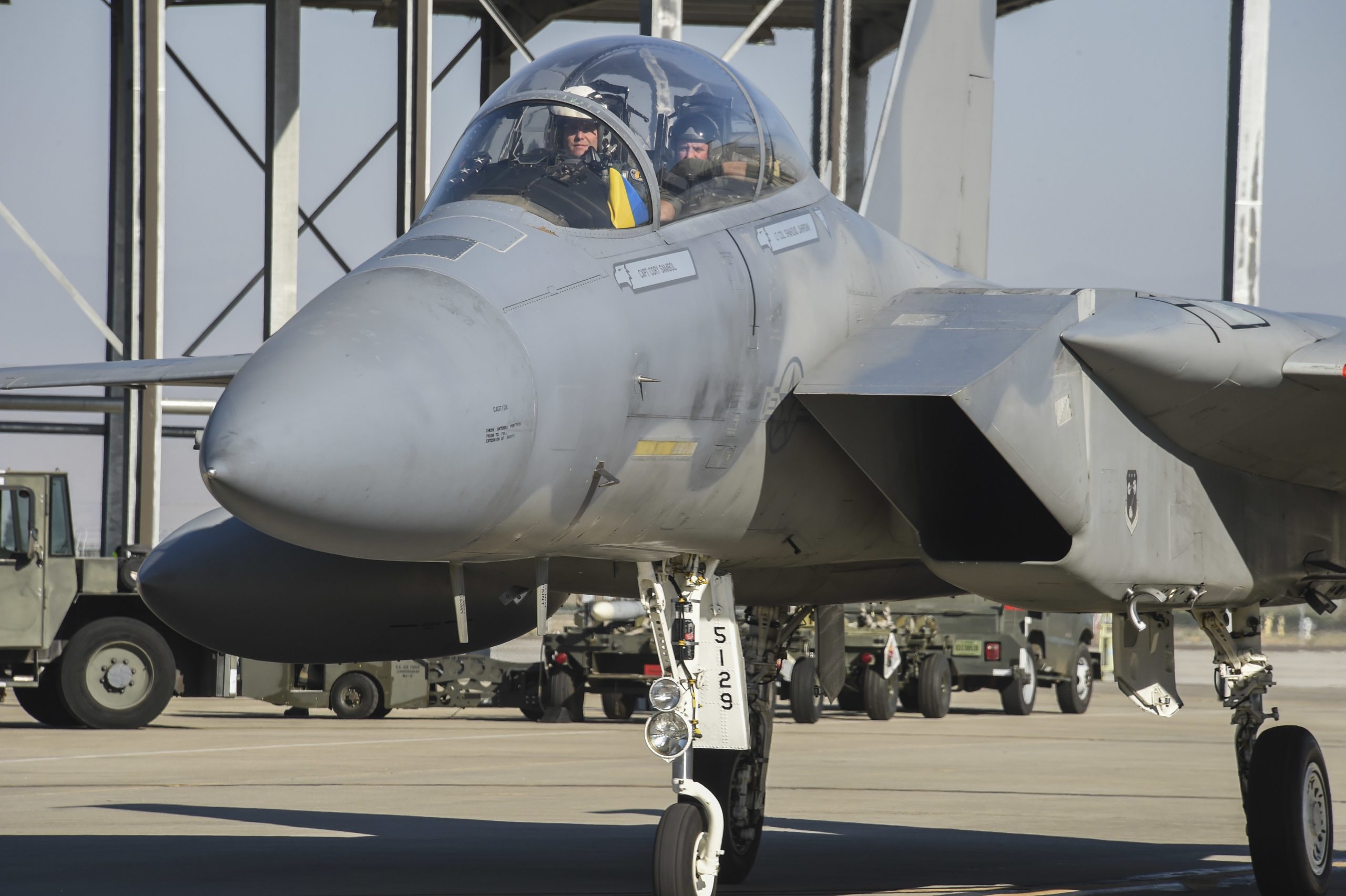
A Ukrainian flag behind the windshield of a California Air National Guard (CANG) F-15D Eagle, 26OCT2017. A Ukrainian General is in the front seat while a CANG Lieutenant Colonel is in the back seat, it was a flight promoting the military partnership of California and Ukraine. CANG photo by Senior Master Sergeant Chris Drudge.
Somewhere in the Middle East (South West Asia), September 2017 USAF video report about F-15E Strike Eagle operations against so-called Islamic State:
2018:
MOUNTAIN HOME AFB, IDAHO, F-15E WALK-AROUND
California Air National Guard (CANG) video, by Staff Sergeant Christian Jadot, of historical moment when for the first time California’s 144th Fighter Wing lands their F-15C & D Eagles on Starokostiantyniv Air Base, Ukraine, 06OCT2018 (it should be noted that it was not the first time for California to send aircraft to Ukraine, in 2011 the CANG sent F-16 Falcons):
CALIFORNIA OREL NAD UKRAINOY ОРЕЛ НАД УКРАИНОЙ
July 2019:
Kadena Eagle celebrates 60 years of U.S.-Japan relations
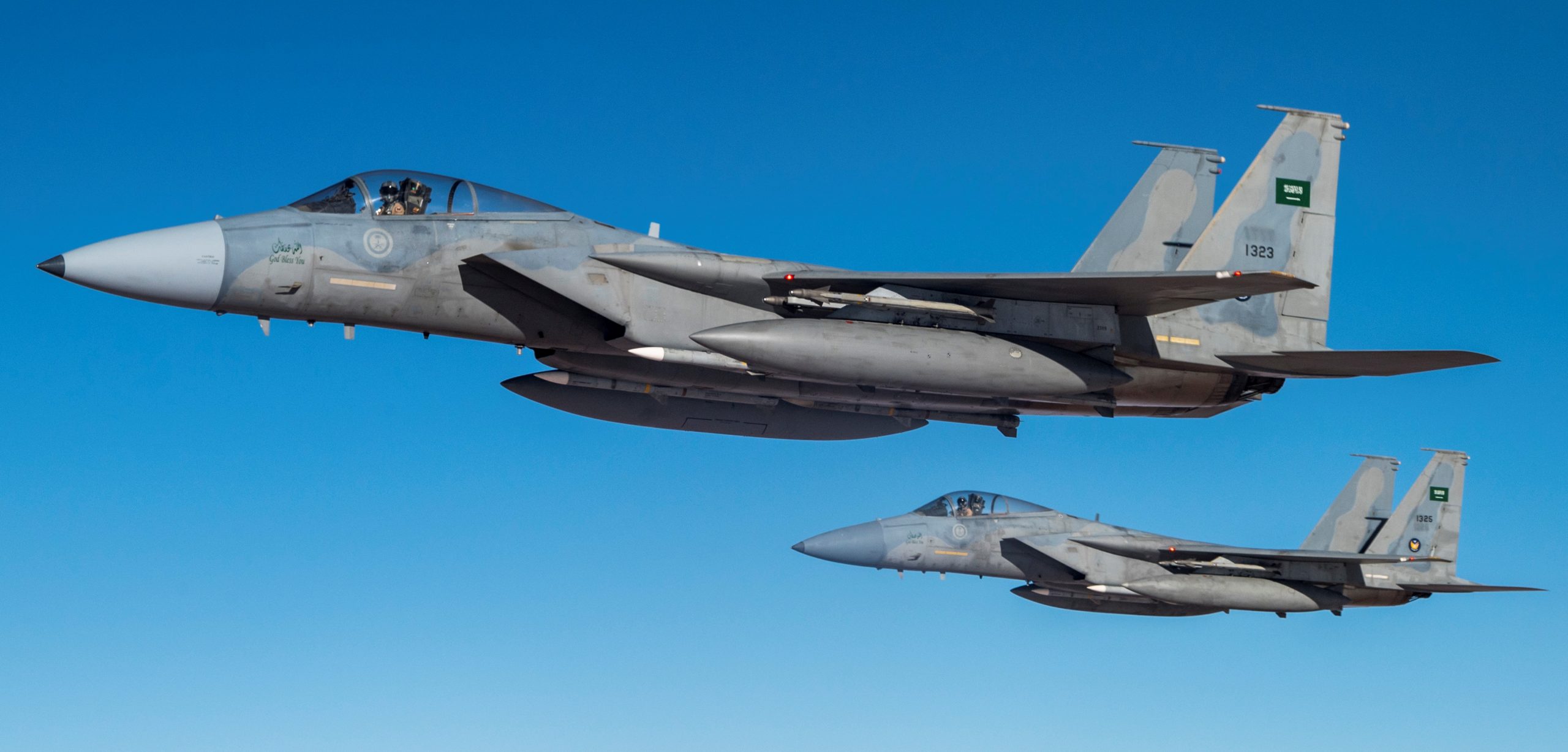
Royal Saudi Air Force F-15C Eagles, over the Kingdom of Saudi Arabia. USAF photo by Technical Sergeant Christopher Ruano, November 2019.
PANDEMIC OVERFLIGHT: THE SANDMAN ENTERS
The F-15 has adjustable air intakes. In this May 2020 video, pay attention to the intake as the turbines ignite:
IDAHO’S TIGERS & THUNDERBOLTS BLAST THE SKIES OVER FLORIDA!
USAF video of 493rd Fighter Squadron F-15C Eagles launching NATM-9M training missiles at aerial targets, somewhere over the Atlantic Ocean, 08DEC2020:
USAF video, by Master Sergeant Larry E. Reid Junior, showing Japanese F-15J Eagles landing on Anderson AFB, Guam, 28JAN2021:
March 2021:
The new Boeing F-15EX HAS ARRIVED! COMMANDER SAYS “IT’S AN EX-CITING DAY!”
SINGAPORE’S IDAHO BASED SKY PIRATES BOMB LAS VEGAS?
On 04MAY2021, U.S. Air Force F-15E Strike Eagles, based on the United Kingdom, conducted an “Independence Flyover” of the tiny NATO country of Latvia. Short video of F-15E getting refueled enroute to Latvia by Technical Sergeant Emerson Nuñez:
USAF video, by Staff Sergeant Danielle Sukhlall, of Japanese F-15J Eagles operating from Eielson Air Force Base, Alaska, 07JUN2021:
A November 2021 USAF promo video, by Staff Sergeant River Bruce, states the F-15 series of aircraft has a long way to go before retirement:
In January 2022, at least six F-15E Strike Eagles (from Seymour Johnson Air Base, North Carolina) were deployed to NATO Belgium, for so-called air policing missions against Russia. Video via NATO:
February 2022:
F-15E Strike Eagles ‘forward deployed’ to NATO Estonia
July 2022:
F-15E GETS NEW COLORS, VIA VINYL DECALS.
Edwards AFB reveals it has the oldest, and fastest, operating F-15 in the world, USAF video by Giancarlo Casem:
USAF promotional video, by Harley Huntington, F-15 First Flight to F-15EX:

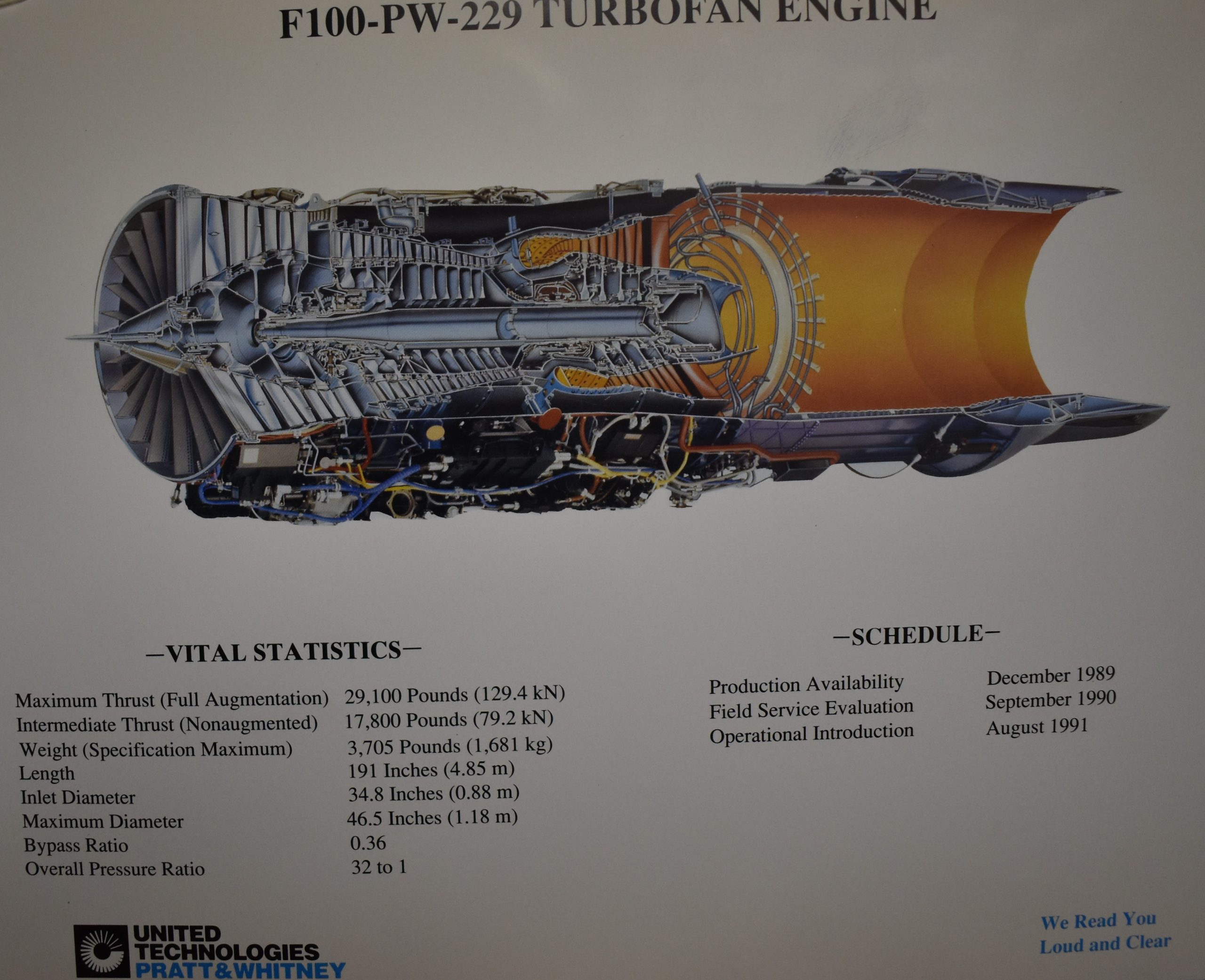
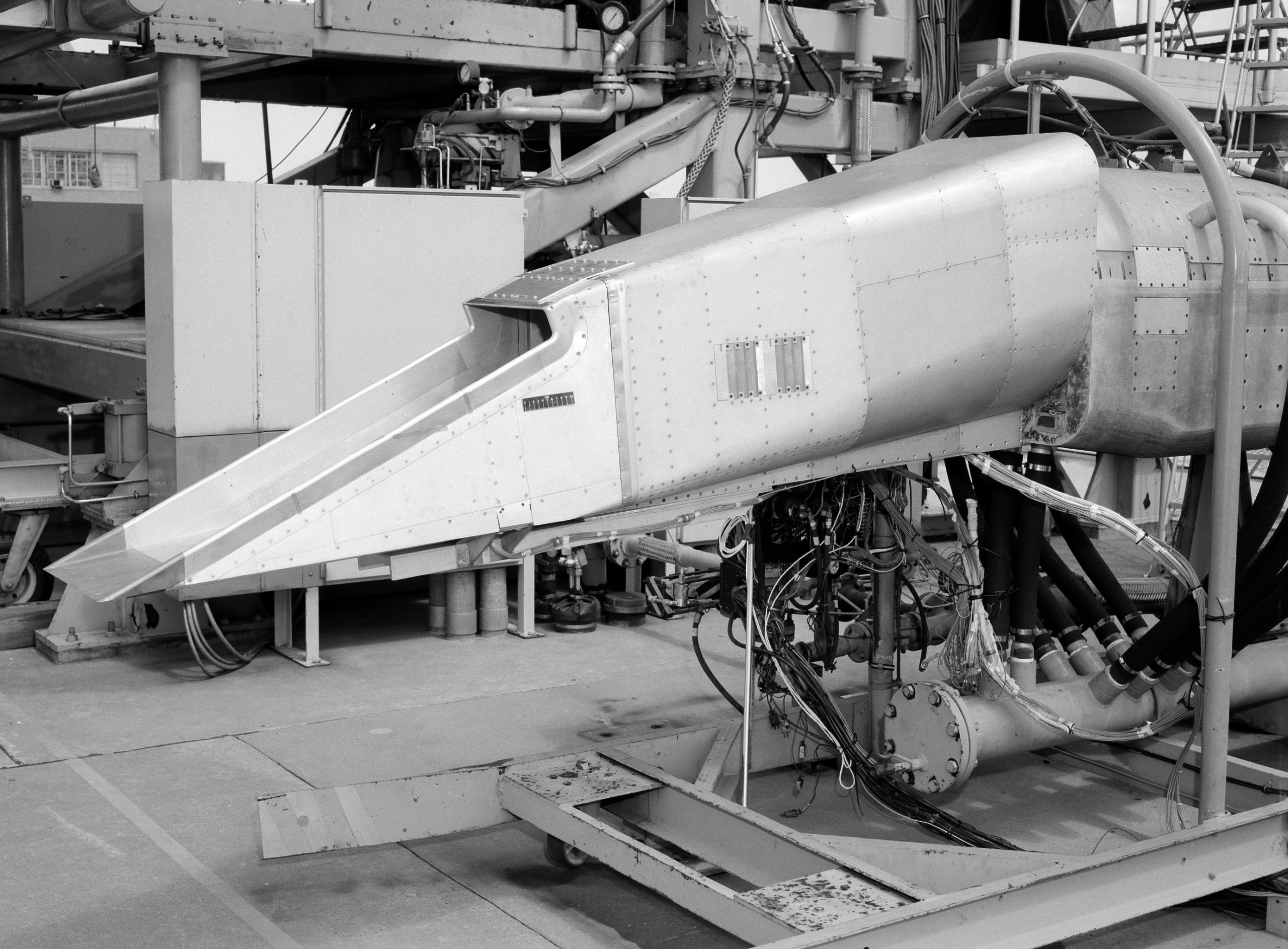
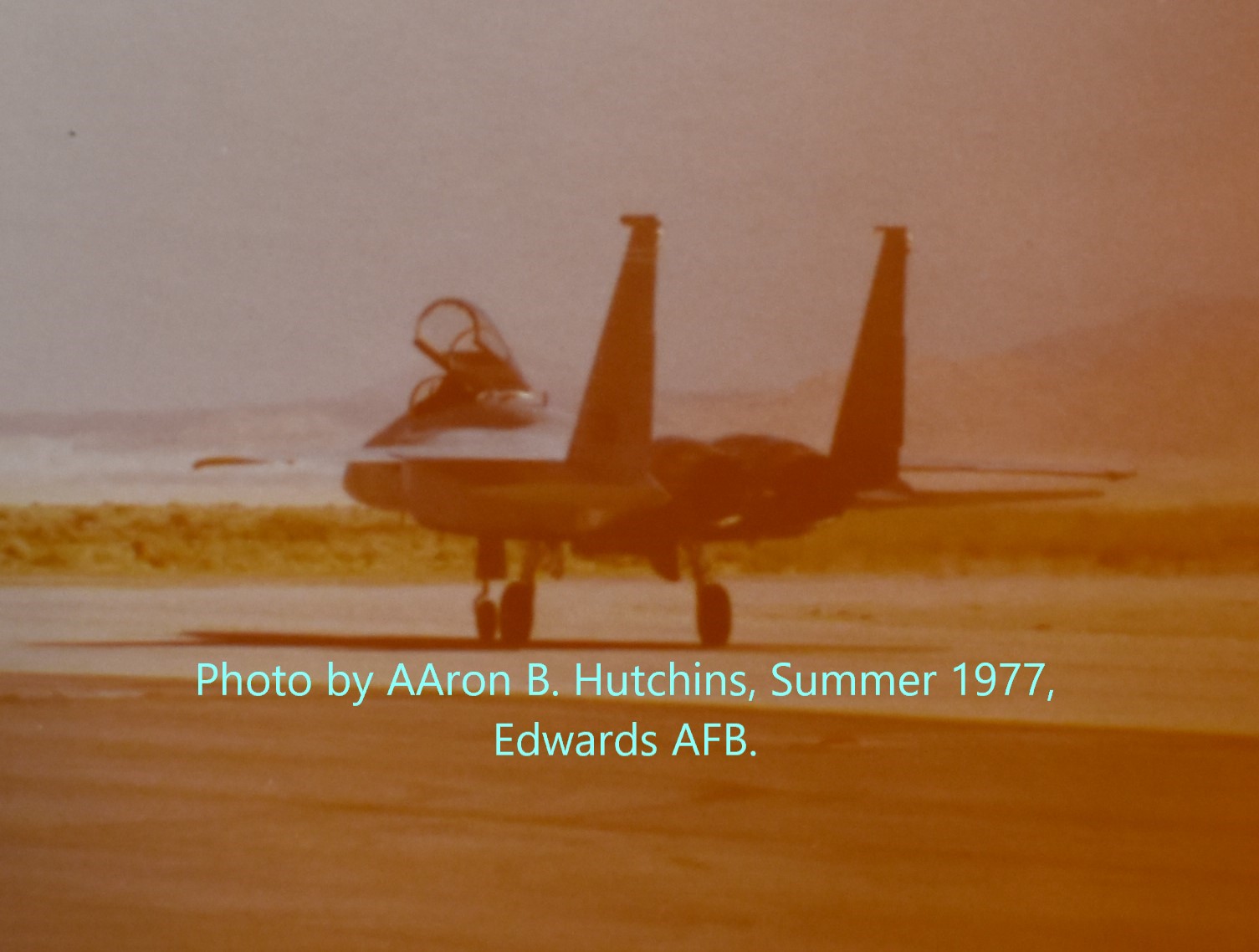
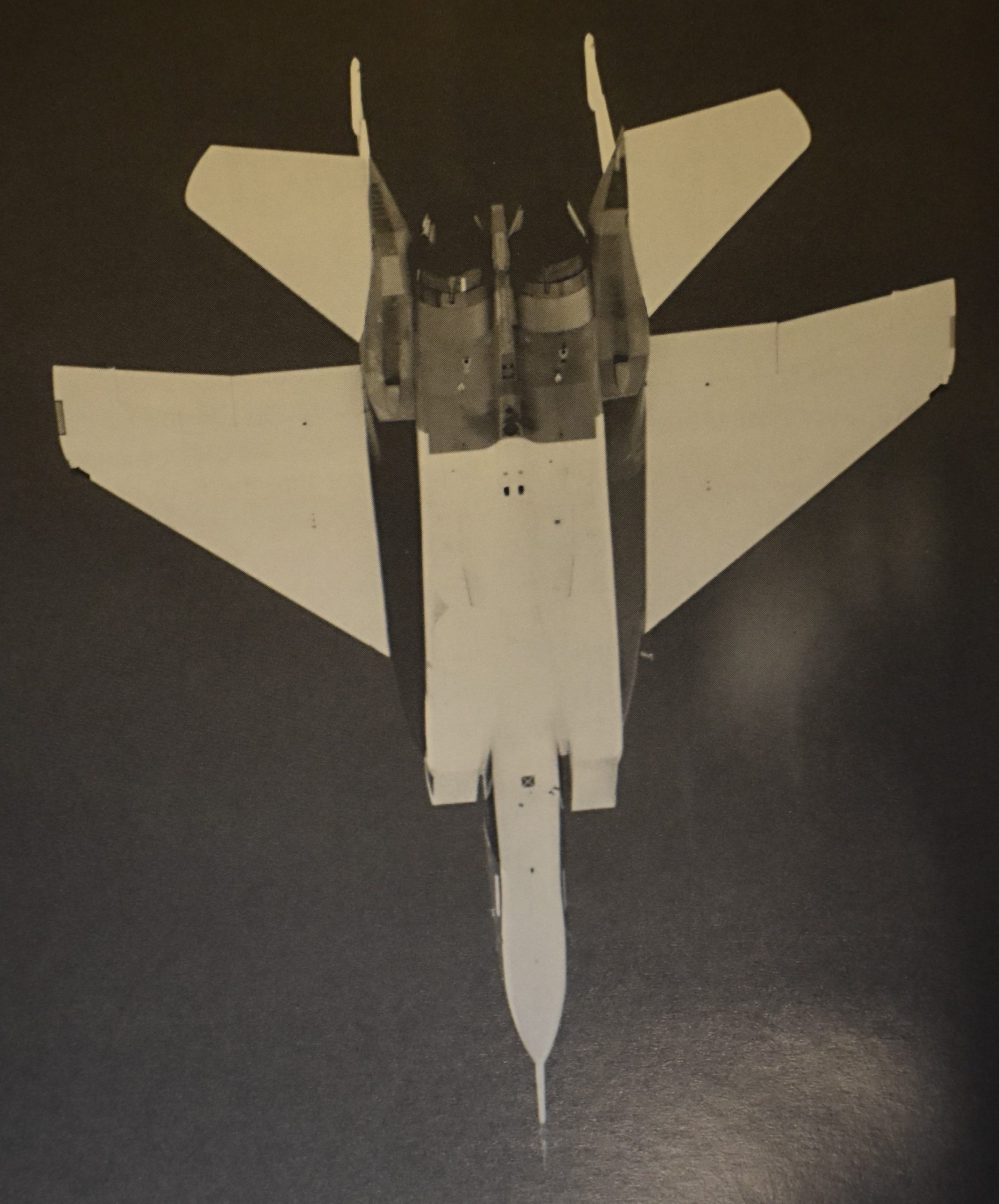
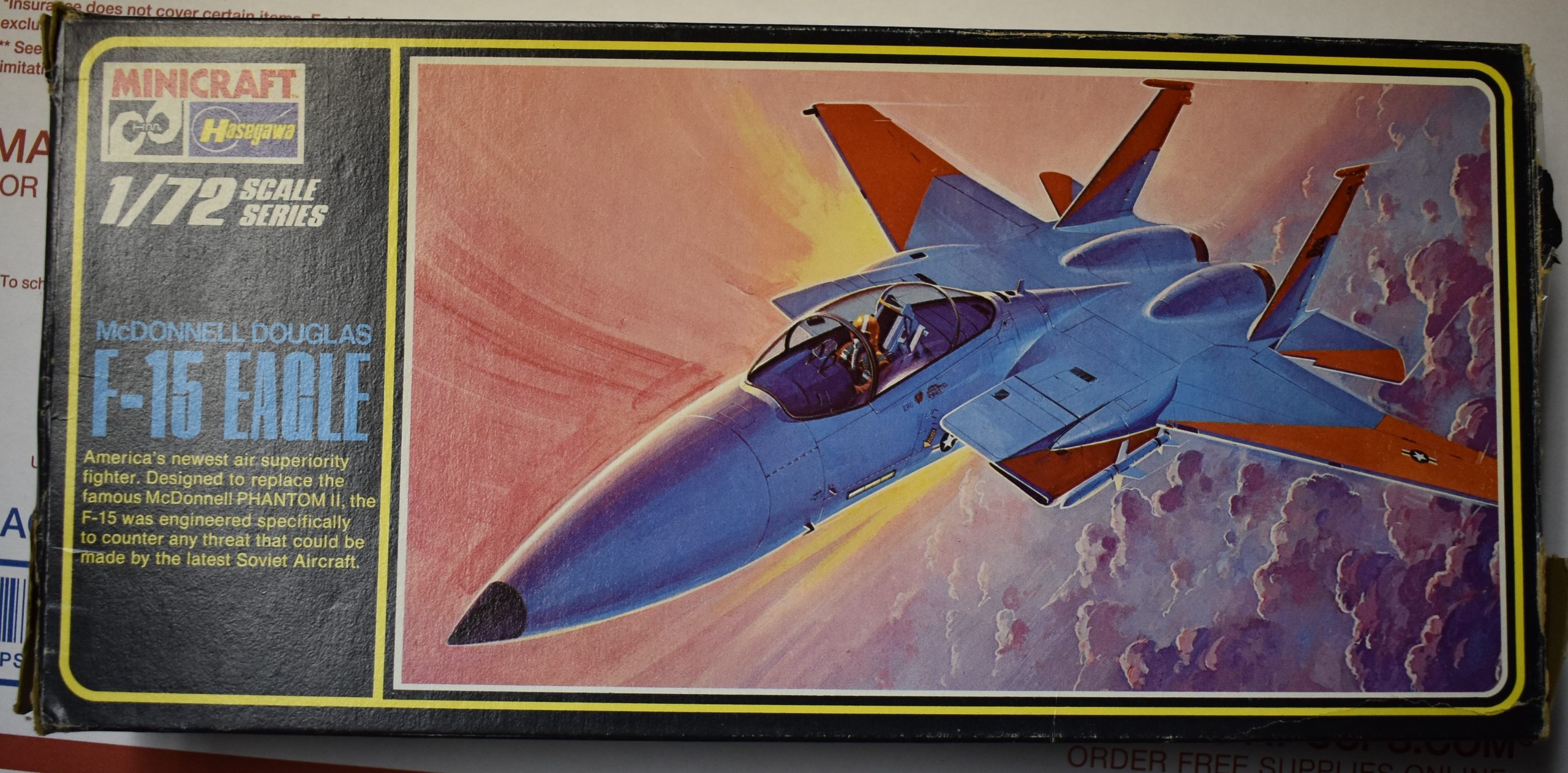
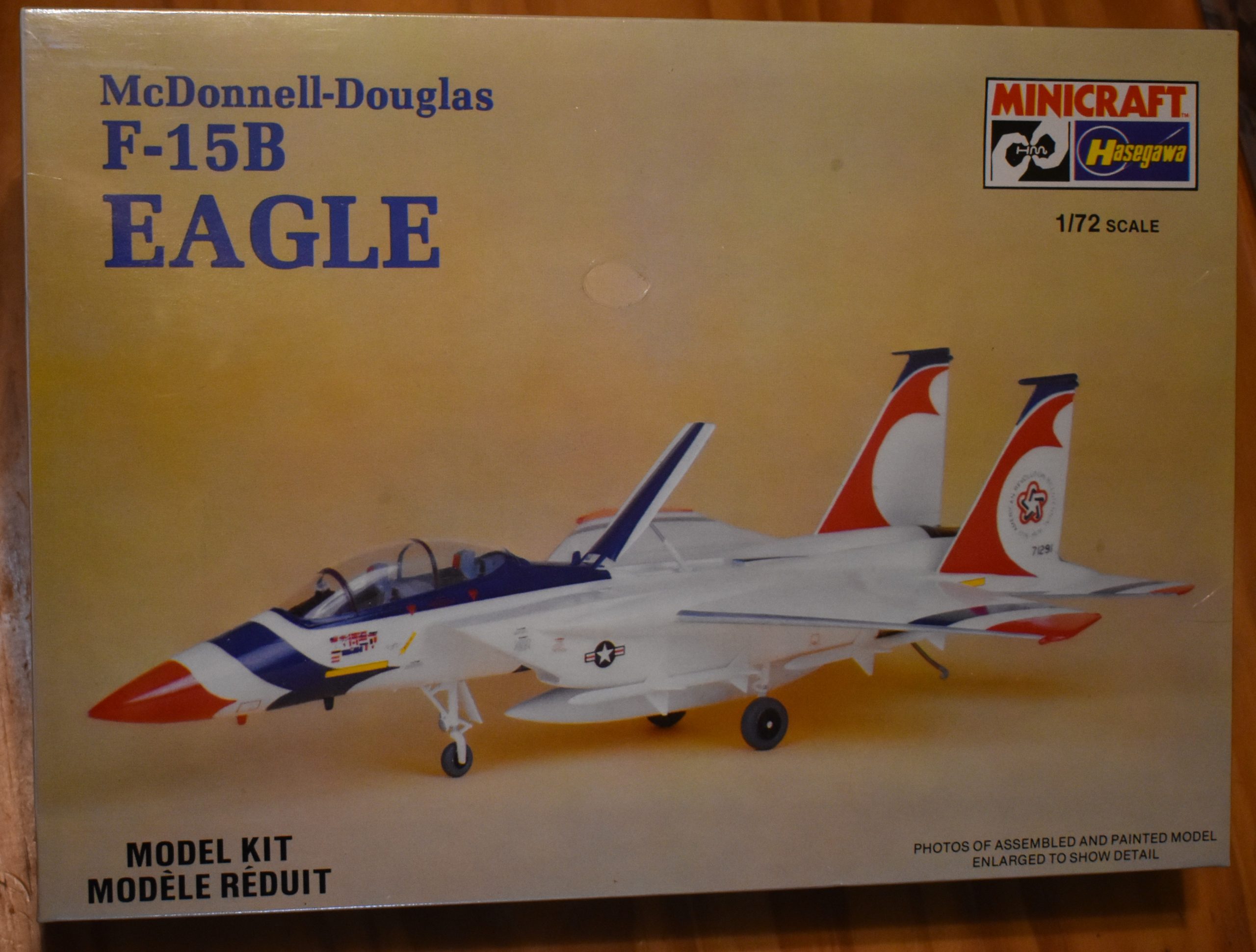
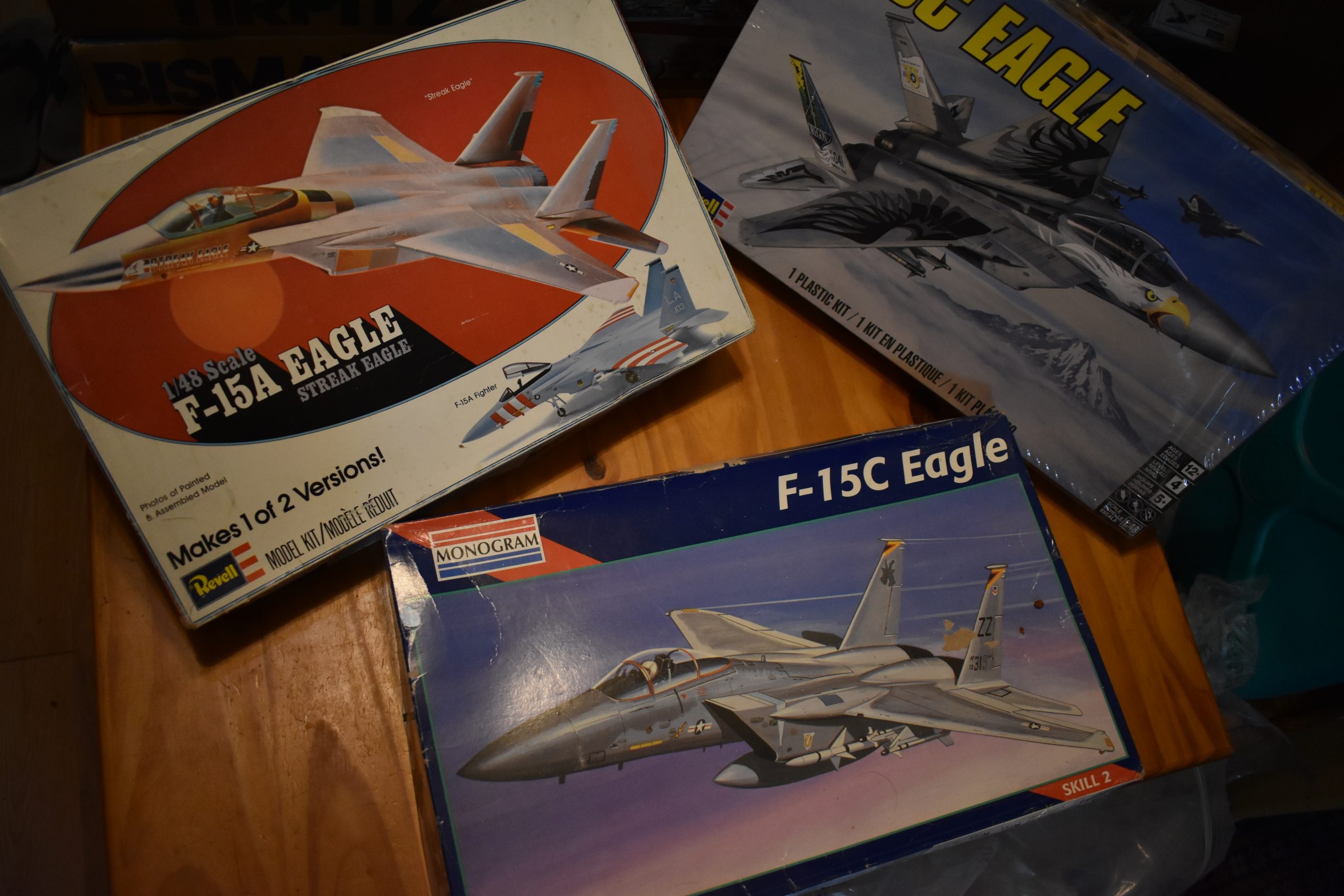
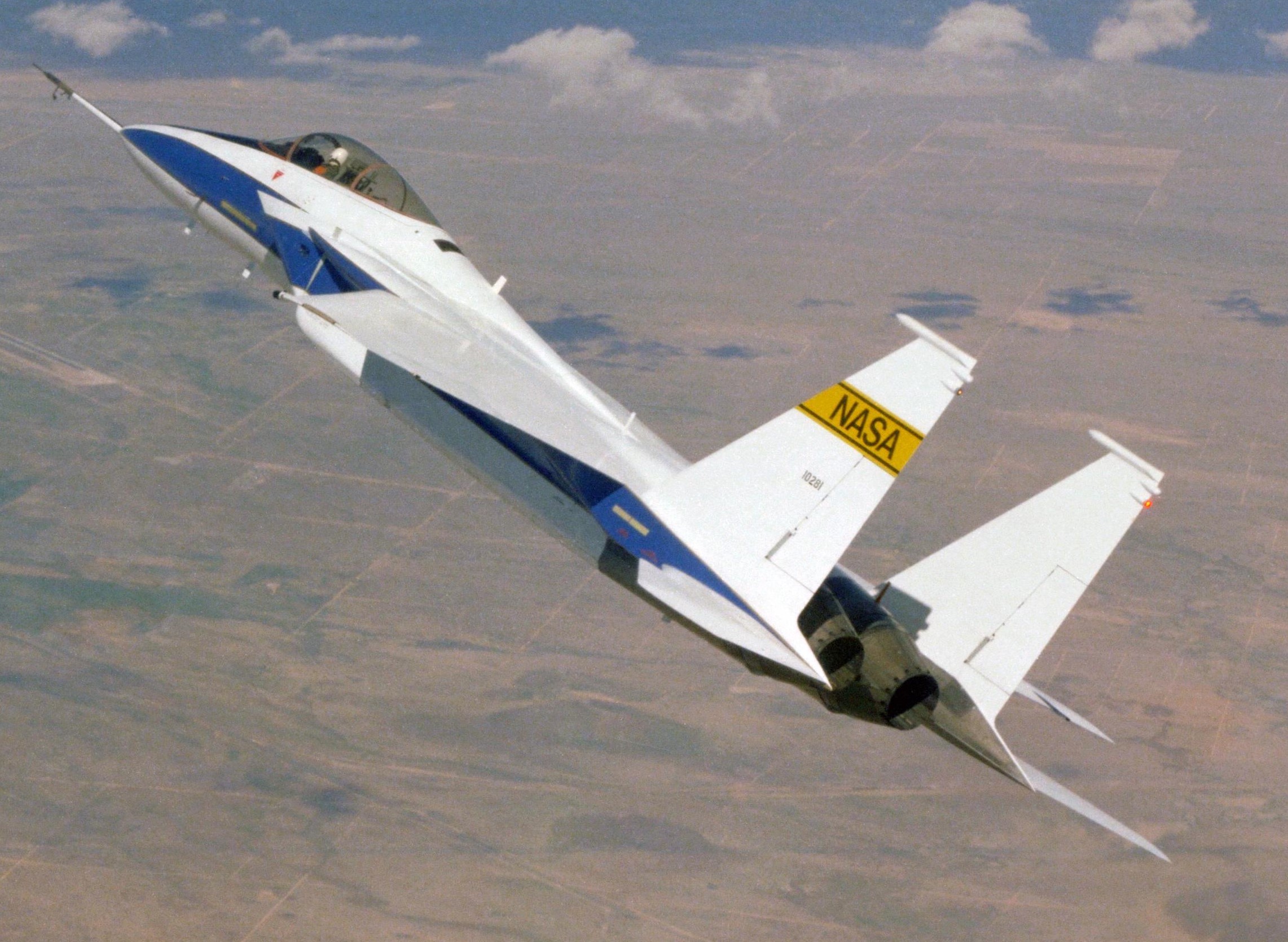
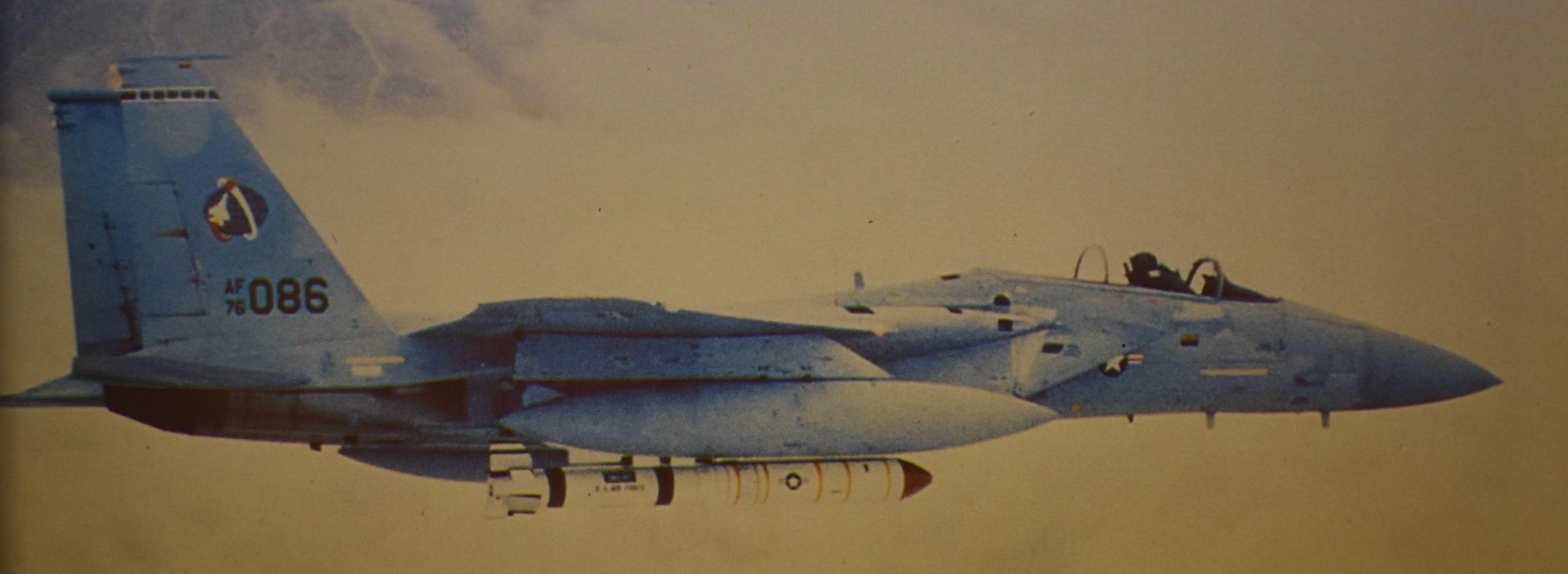
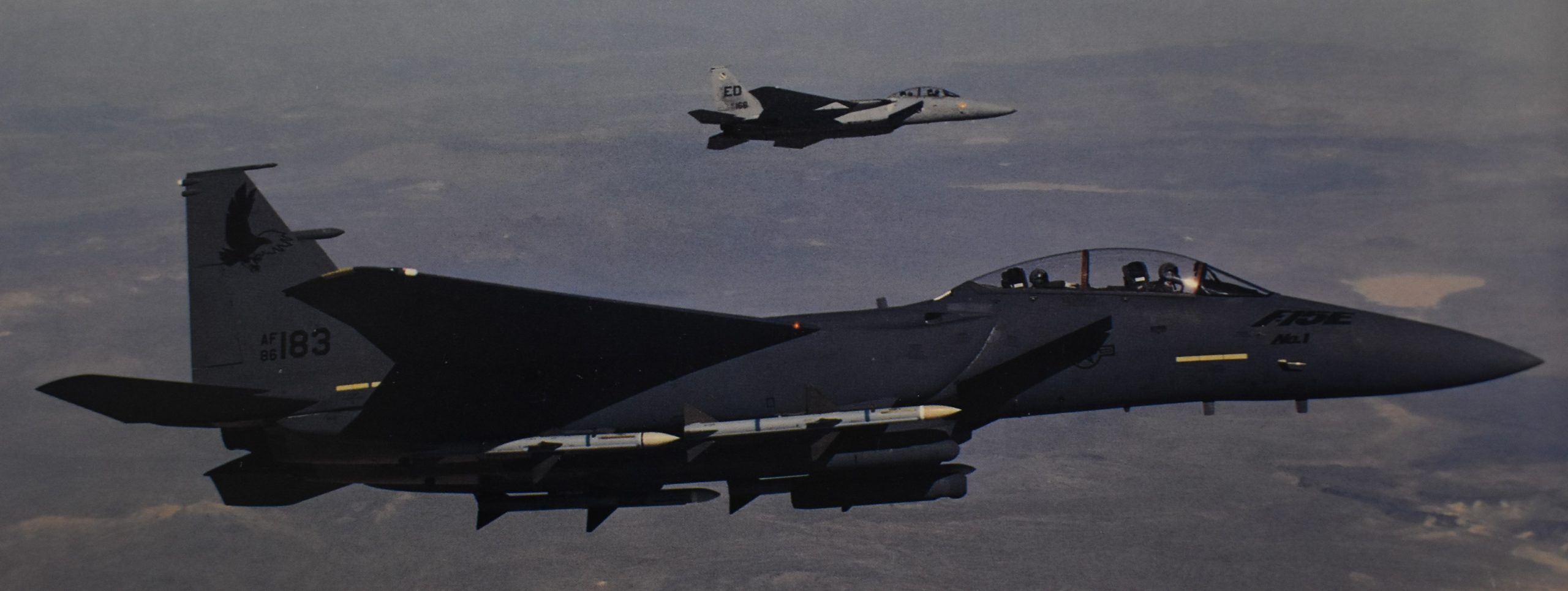
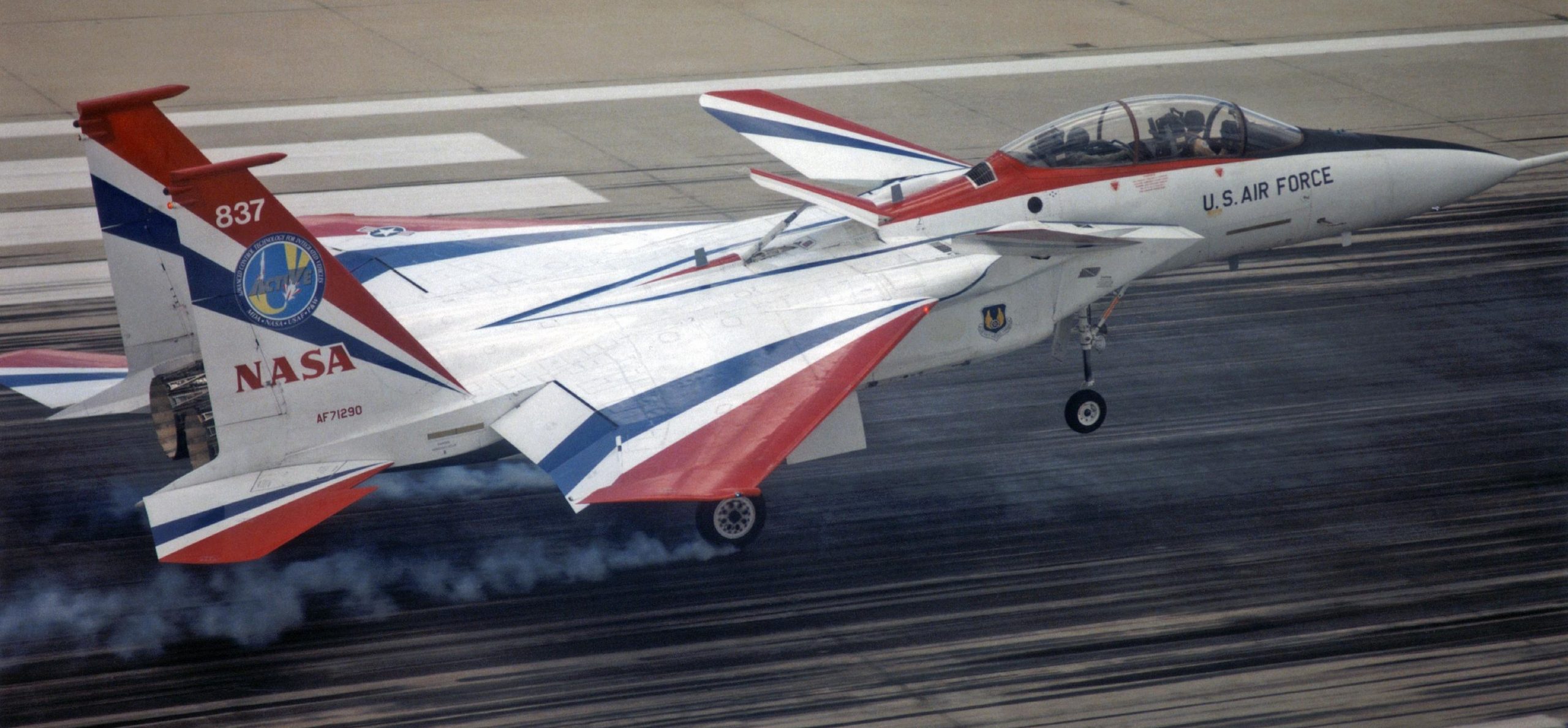
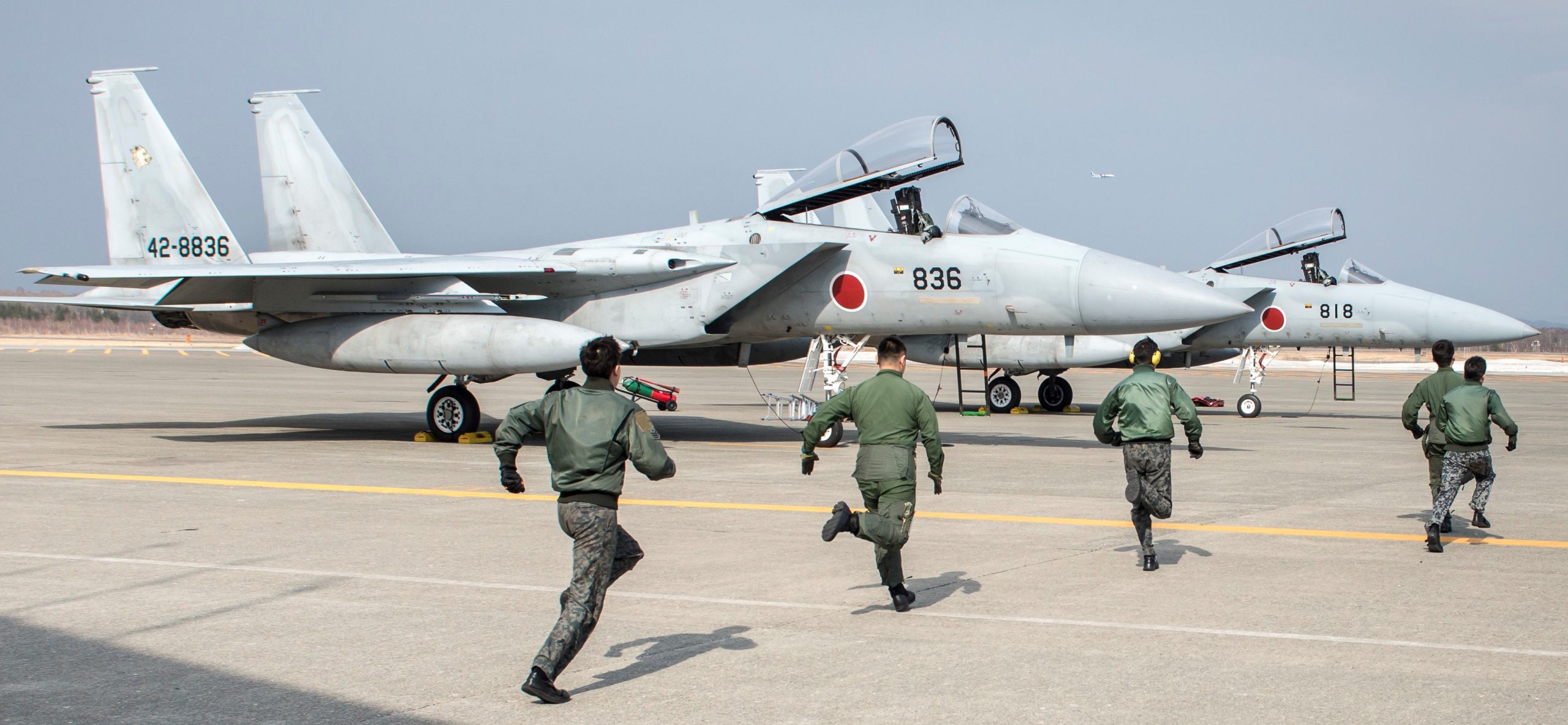
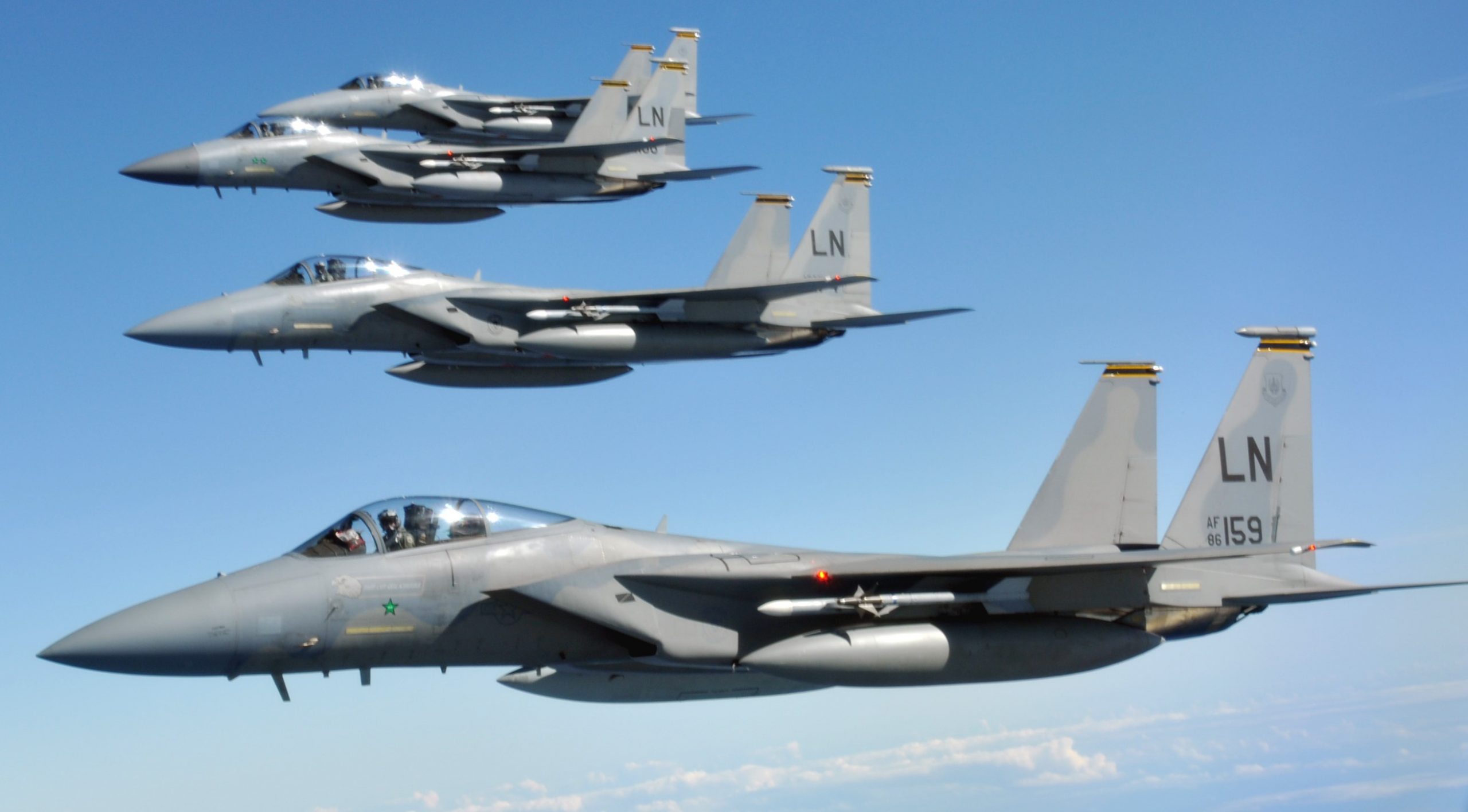
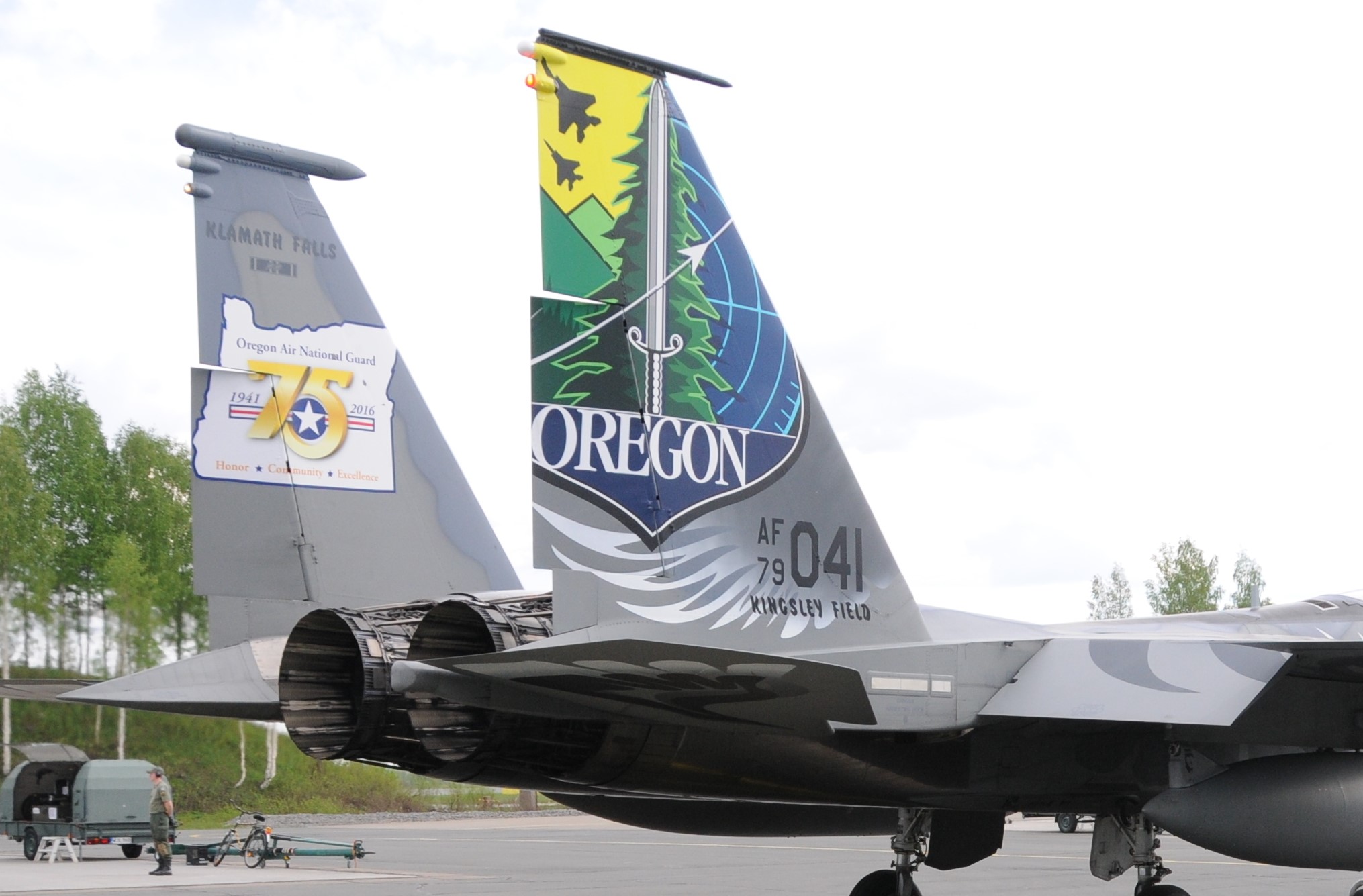
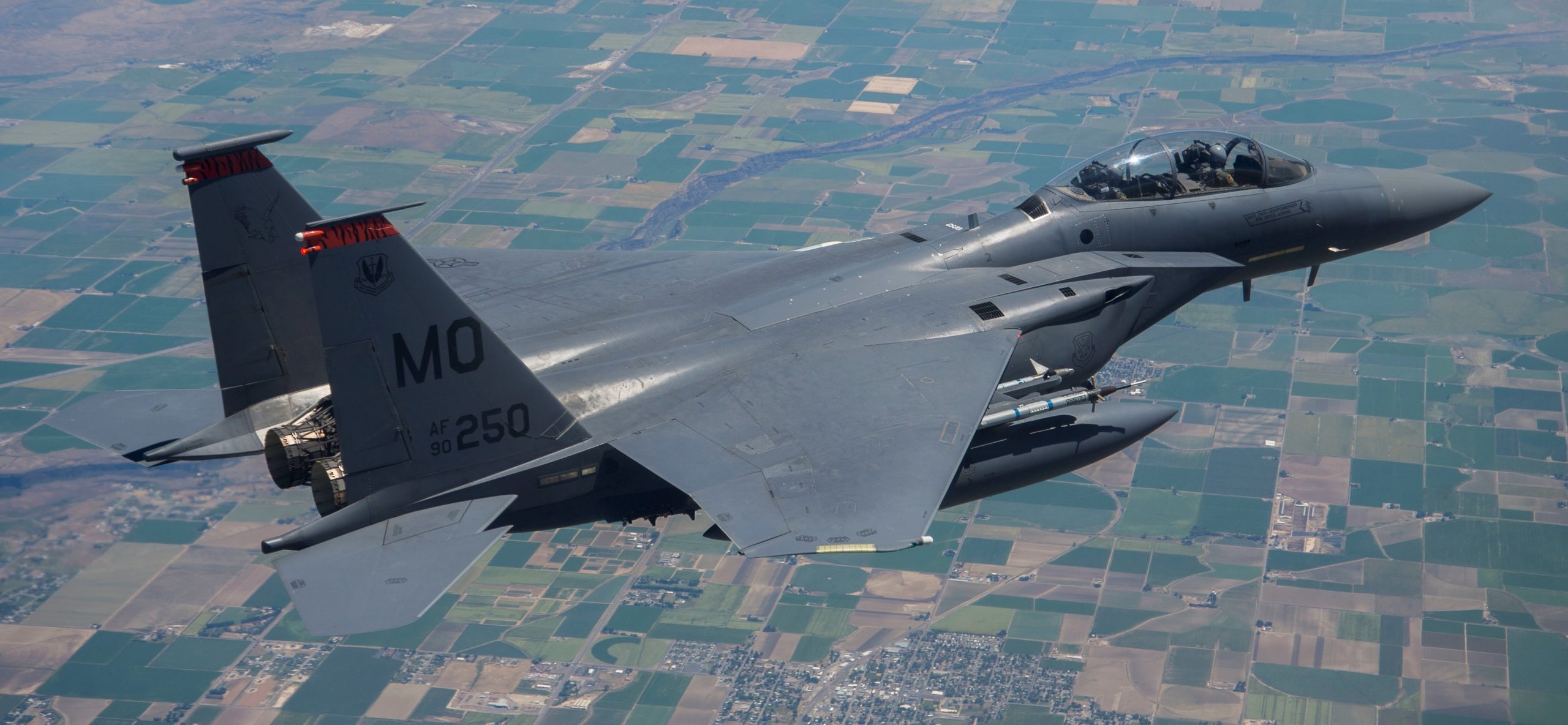
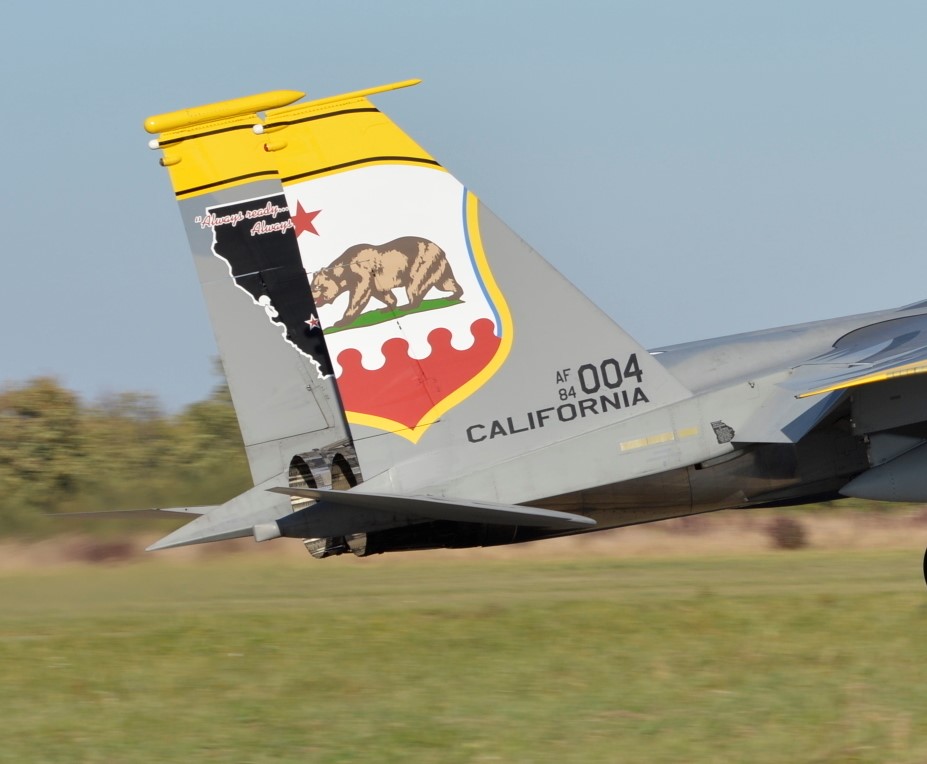
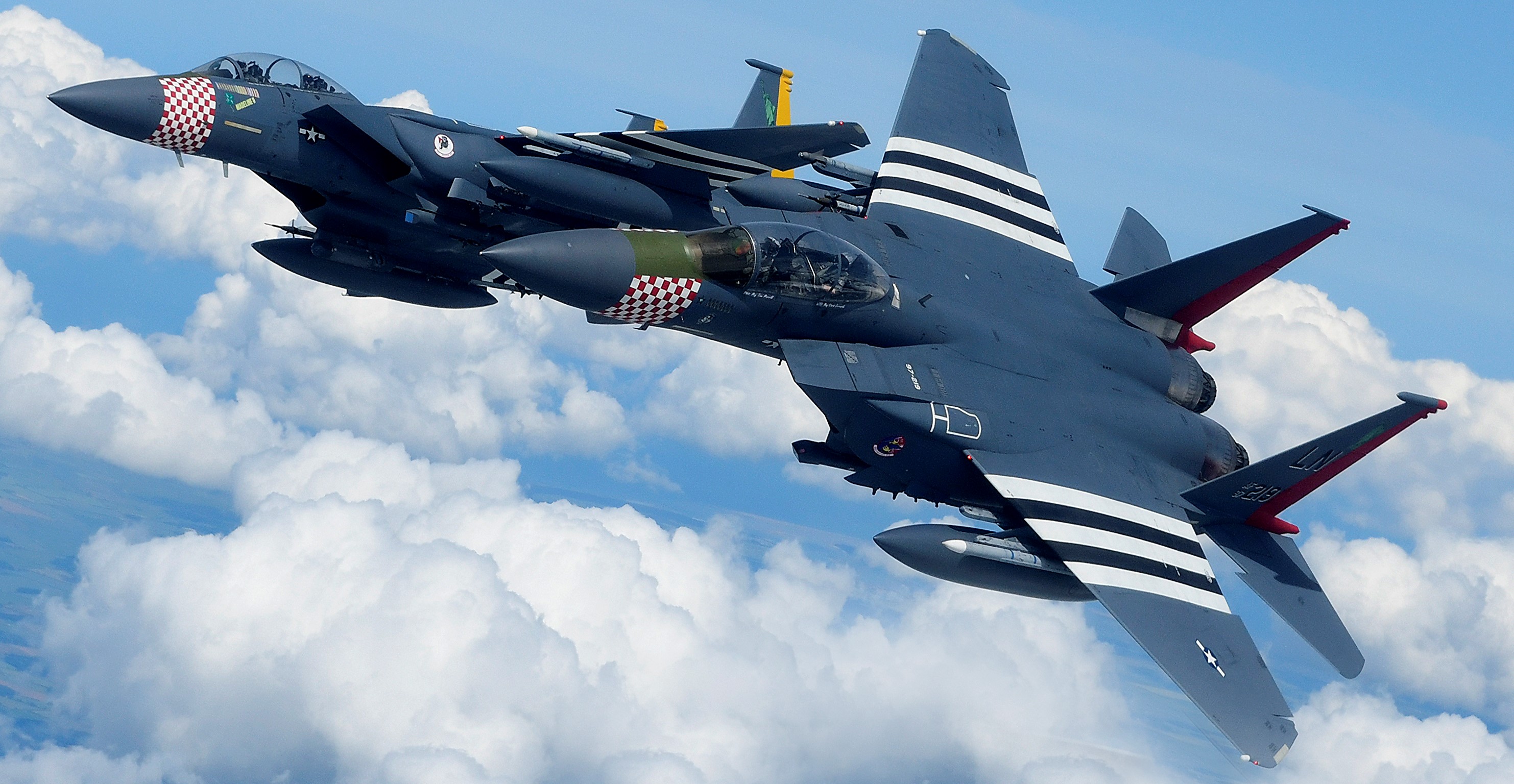
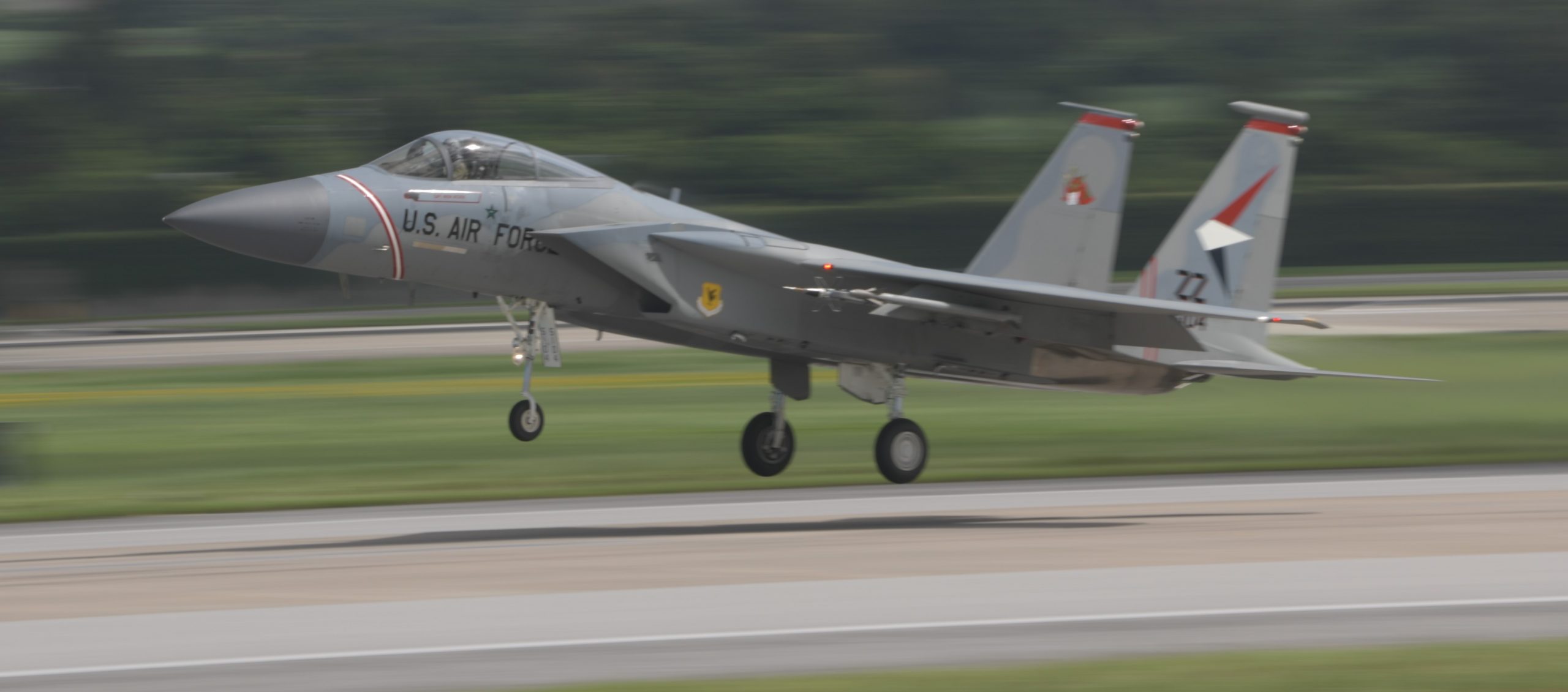
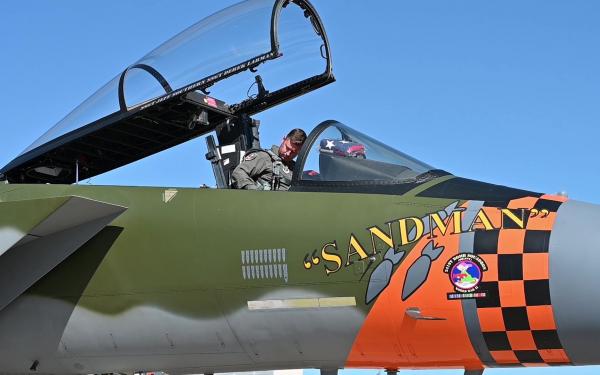


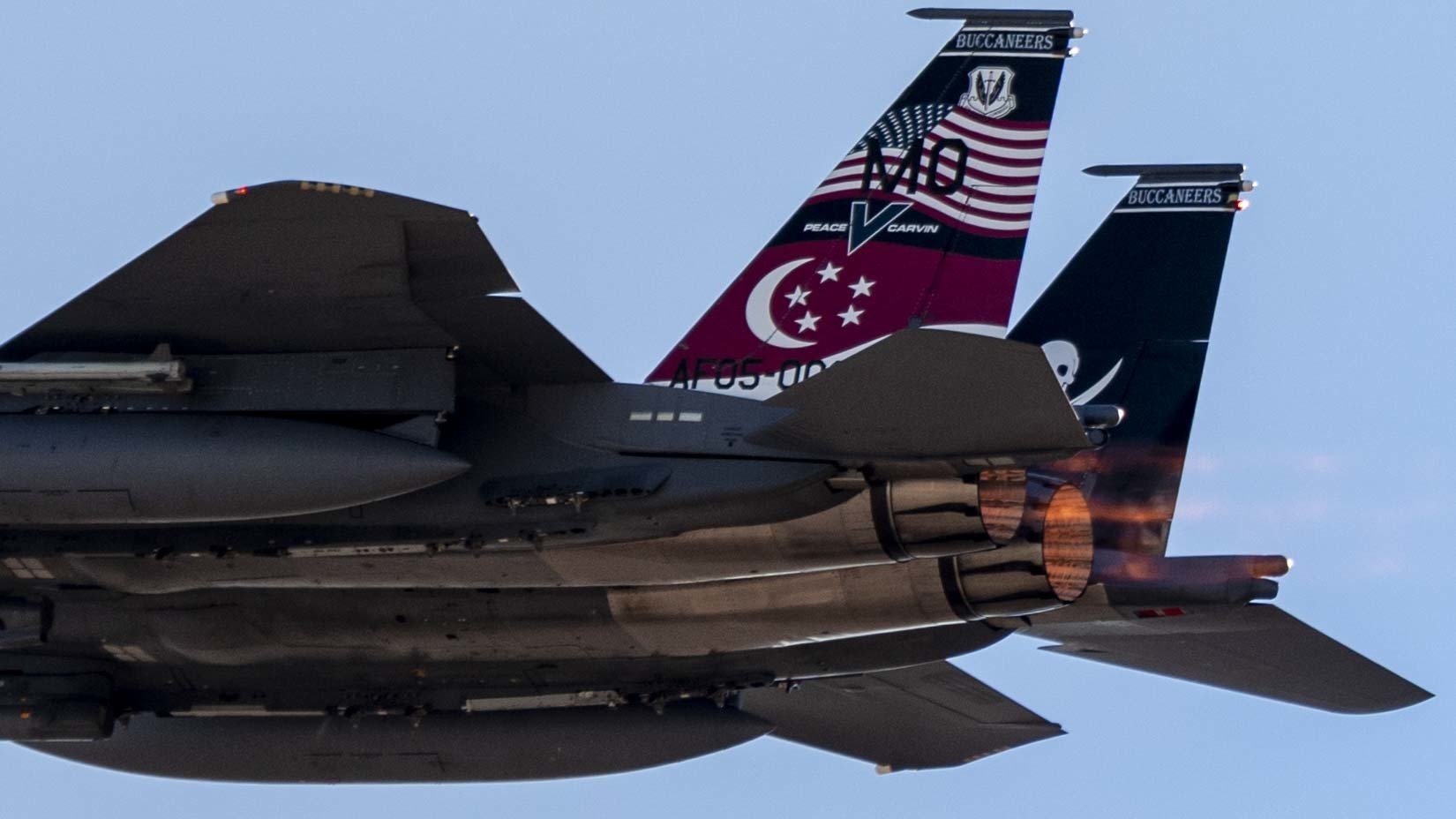
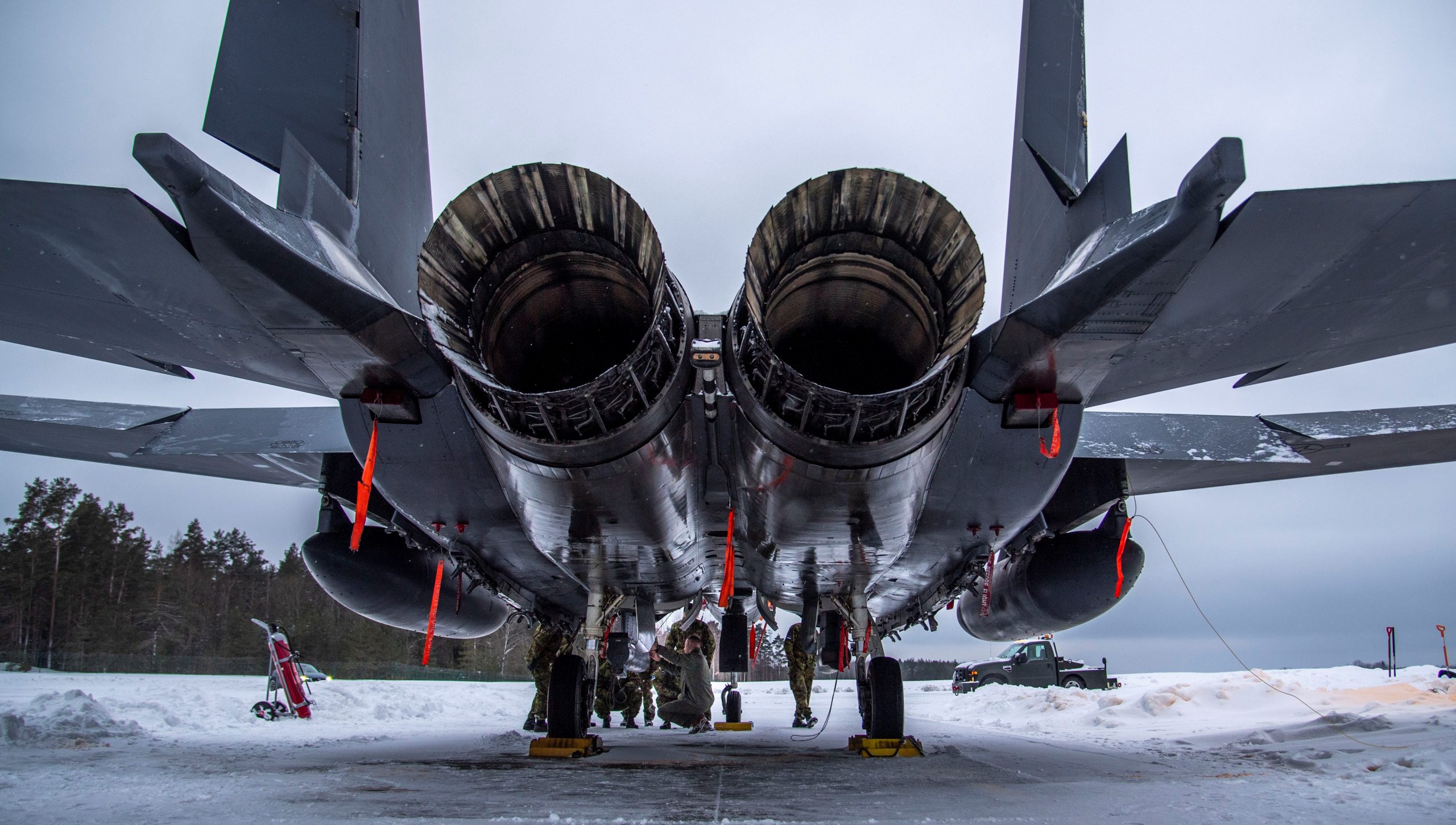
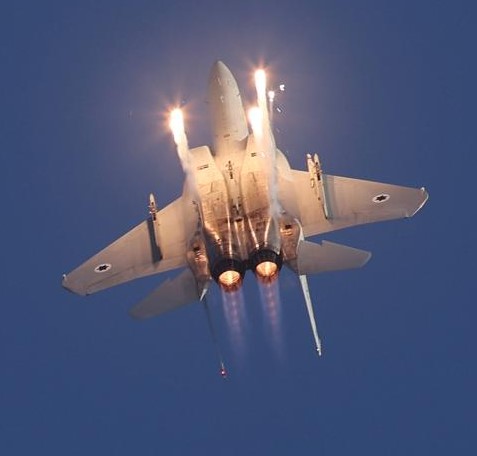


 Oregon National Guard’s Project 926, move the old tail number 926 OV-1C Mohawk ‘gate guard’ to a better location.
Oregon National Guard’s Project 926, move the old tail number 926 OV-1C Mohawk ‘gate guard’ to a better location.






 23OCT2019 was the culmination of three years of volunteer work by Oregon National Guard retirees who worked and flew the OV-1 Mohawk from 1972 to 1992. Almost all of that three years was spent restoring the gate guard.
23OCT2019 was the culmination of three years of volunteer work by Oregon National Guard retirees who worked and flew the OV-1 Mohawk from 1972 to 1992. Almost all of that three years was spent restoring the gate guard. The new home of the 926 Mohawk is at Deibert Flight Facility, Army Aviation Support Facility.
The new home of the 926 Mohawk is at Deibert Flight Facility, Army Aviation Support Facility. The official dedication ceremony was held 02NOV2019.
The official dedication ceremony was held 02NOV2019. Doctor Joe Masessa, of
Doctor Joe Masessa, of  Mohawk Airshows flies the POW-MIA ‘flying monument’.
Mohawk Airshows flies the POW-MIA ‘flying monument’.
 Somebody needs to make a decal sheet of the Flying Monument.
Somebody needs to make a decal sheet of the Flying Monument.

 From February 1983, a NASA-U.S. Army operated Grumman OV-1C over Edwards AFB.
From February 1983, a NASA-U.S. Army operated Grumman OV-1C over Edwards AFB. U.S. Army-NASA OV-1C Mohawk, automated stall warning system tests @ Edwards AFB, July 1983.
U.S. Army-NASA OV-1C Mohawk, automated stall warning system tests @ Edwards AFB, July 1983. Hasegawa’s now ancient 1:72 scale OV-1B (also issued by Frog in the early 1970s) can be easily modified to a C version by scratch-building the IR glass in the nose.
Hasegawa’s now ancient 1:72 scale OV-1B (also issued by Frog in the early 1970s) can be easily modified to a C version by scratch-building the IR glass in the nose. Roden’s 1:48 scale D boxing depicts the IR nosed Mohawk. The D Mohawk is simply a consolidation of all the best upgrades from previous versions. Oddly, Roden’s C boxing does not depict the IR nose, and the instructions even tell you not to use the IR nose part (which is included on the clear sprue of every Roden Mohawk kit).
Roden’s 1:48 scale D boxing depicts the IR nosed Mohawk. The D Mohawk is simply a consolidation of all the best upgrades from previous versions. Oddly, Roden’s C boxing does not depict the IR nose, and the instructions even tell you not to use the IR nose part (which is included on the clear sprue of every Roden Mohawk kit). Roden’s C version also does not come with the SLAR, but you still need to get it because it comes with fuselage mounted flare dispensers and ‘classified’ electronic recon under-wing pods.
Roden’s C version also does not come with the SLAR, but you still need to get it because it comes with fuselage mounted flare dispensers and ‘classified’ electronic recon under-wing pods.
